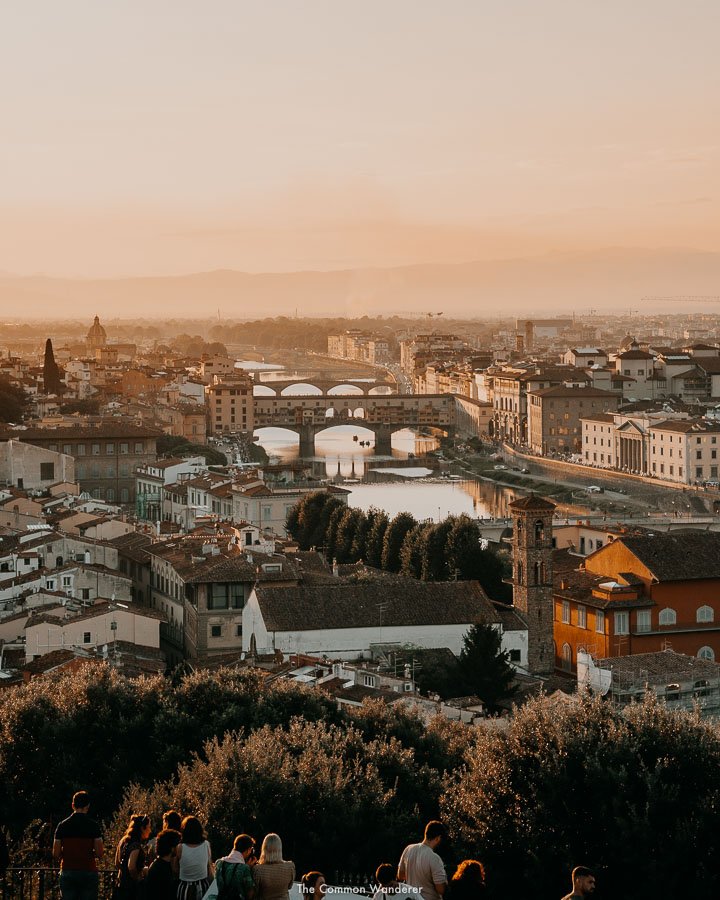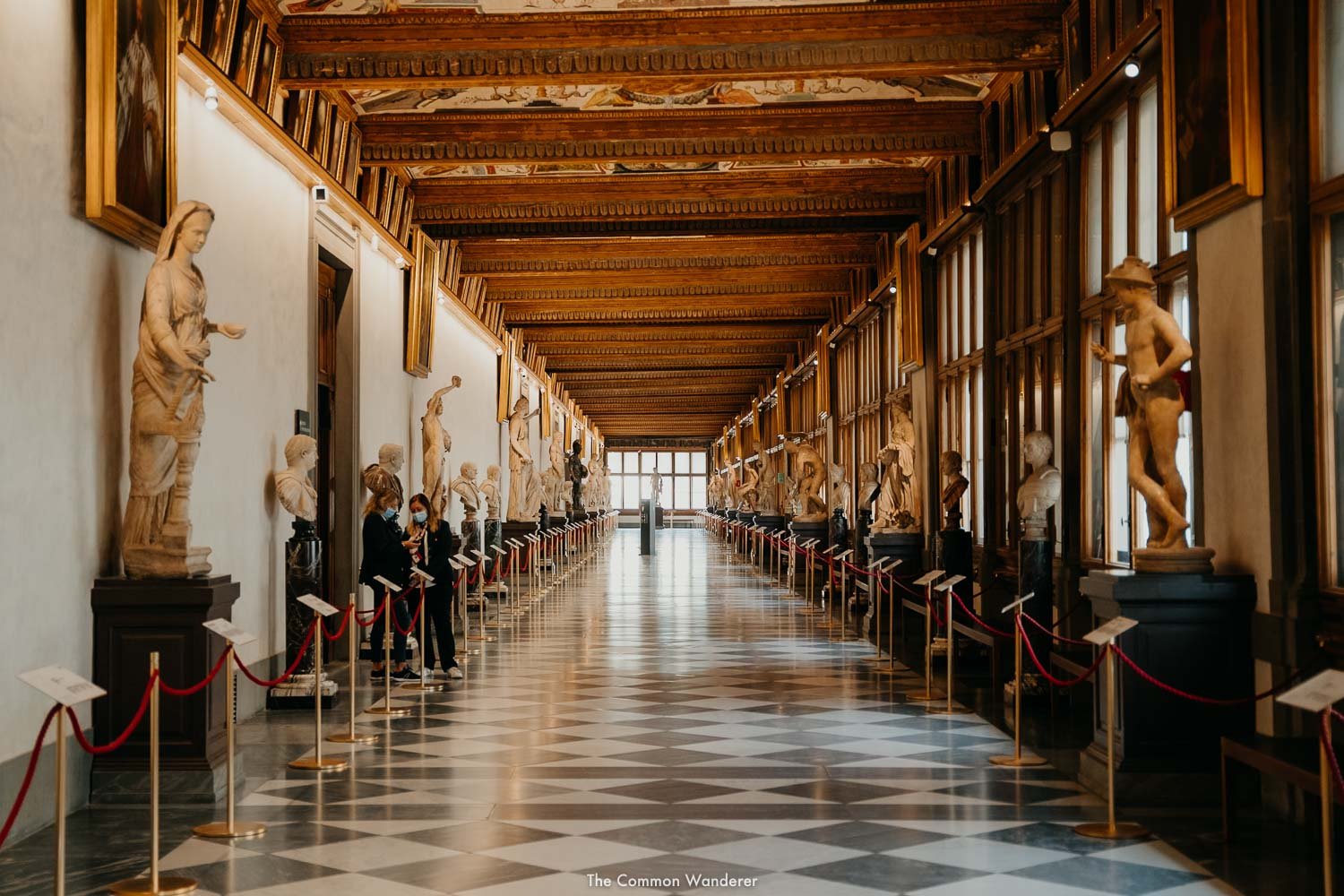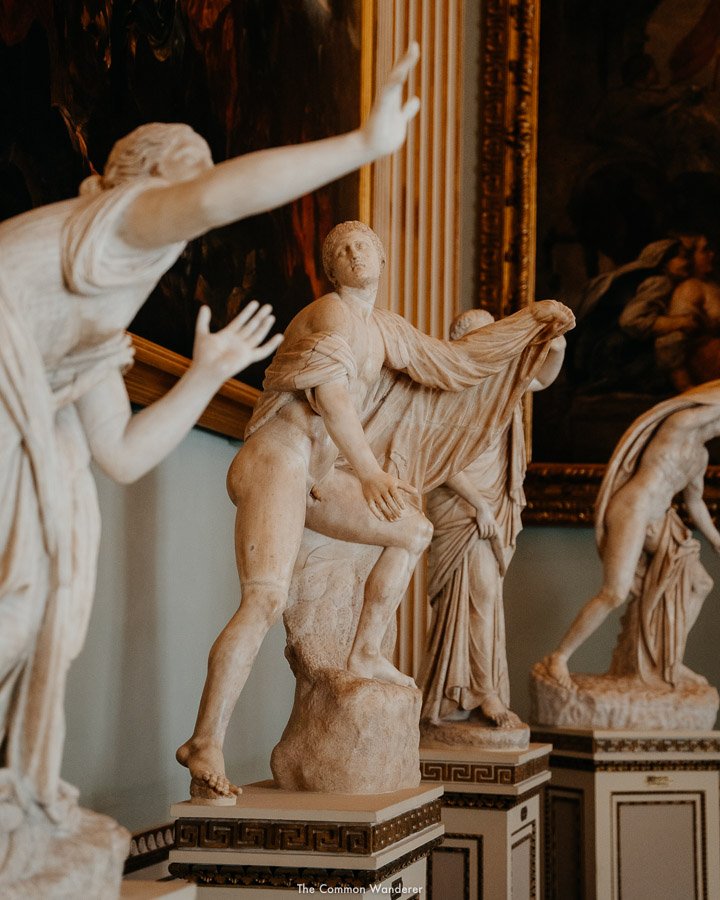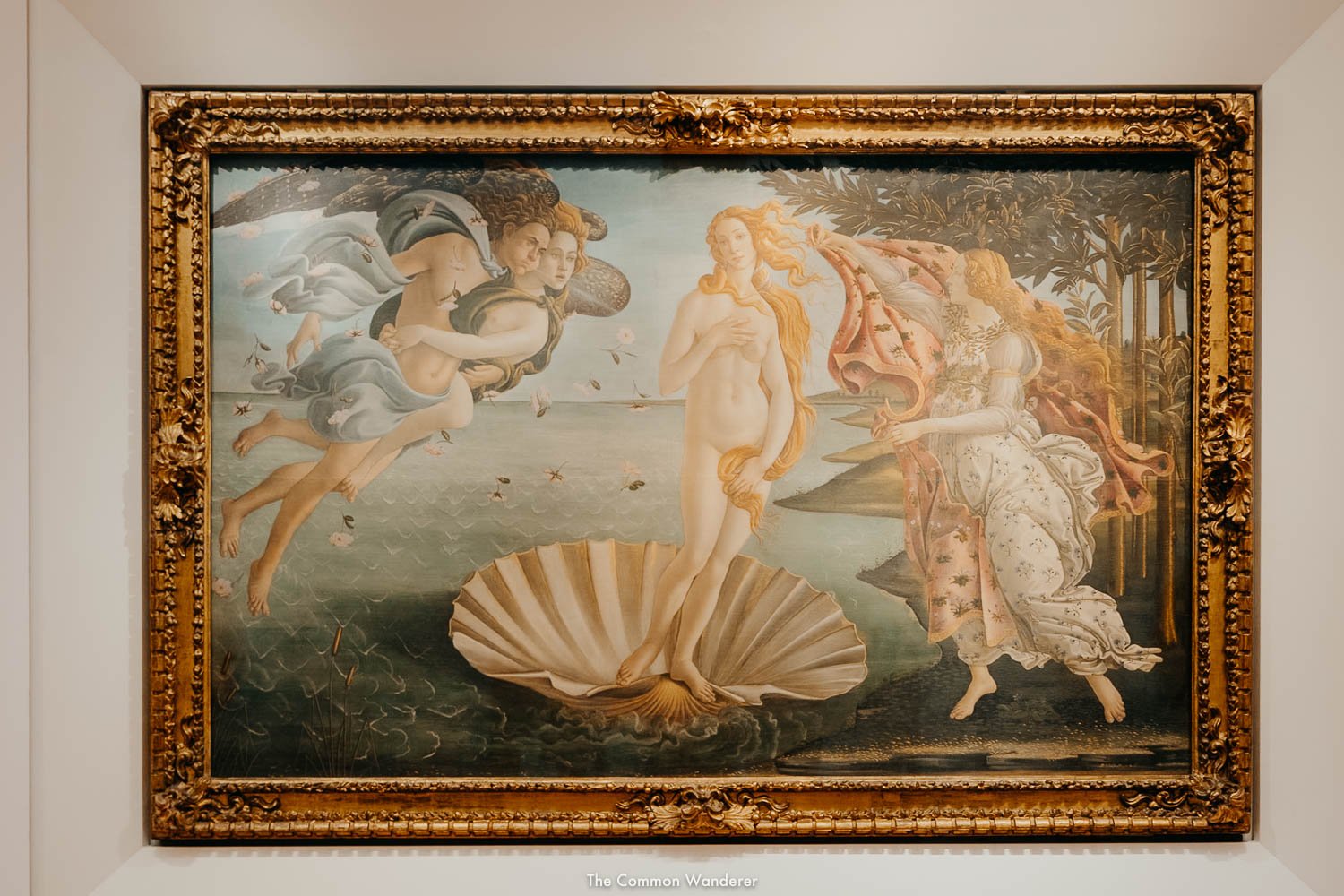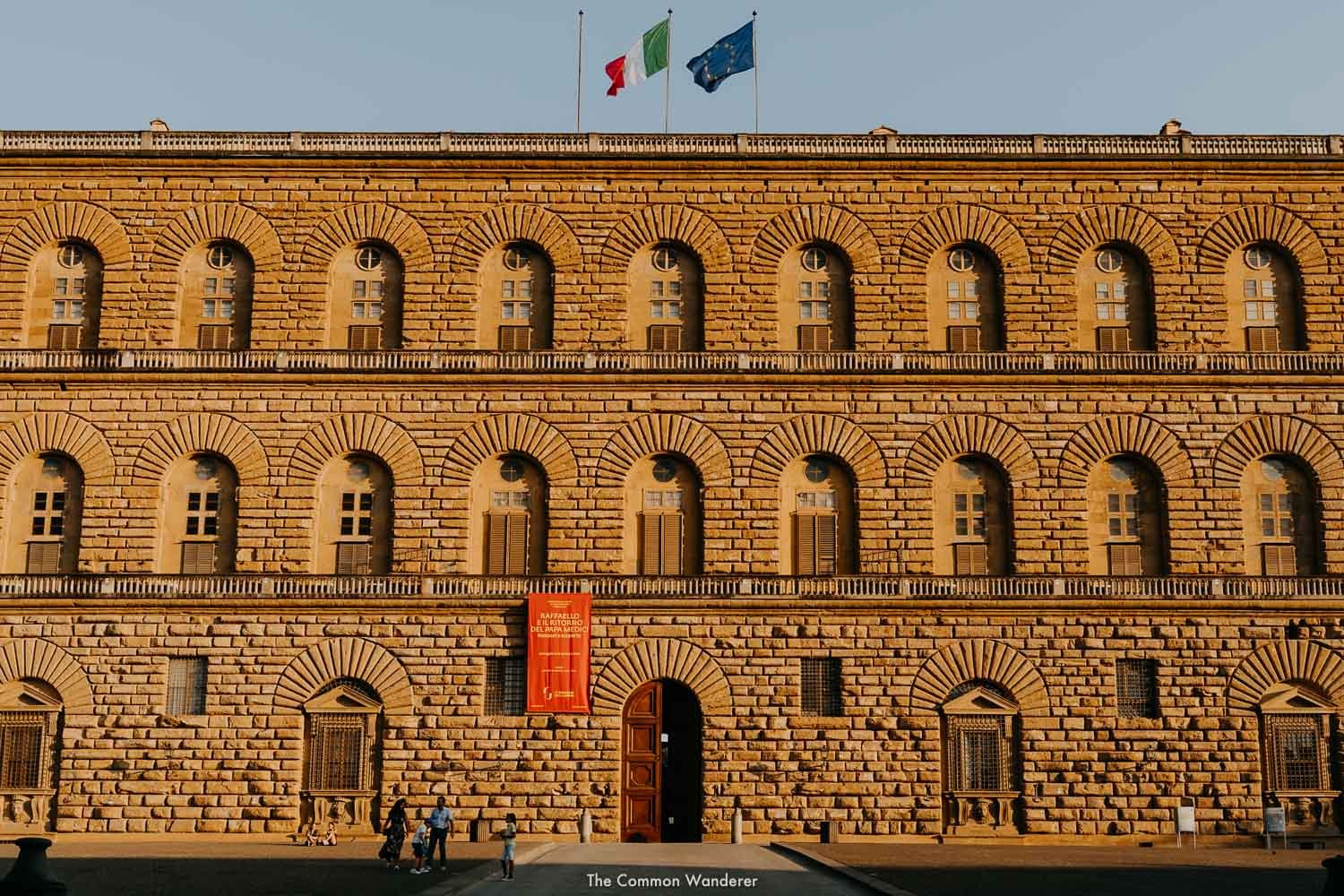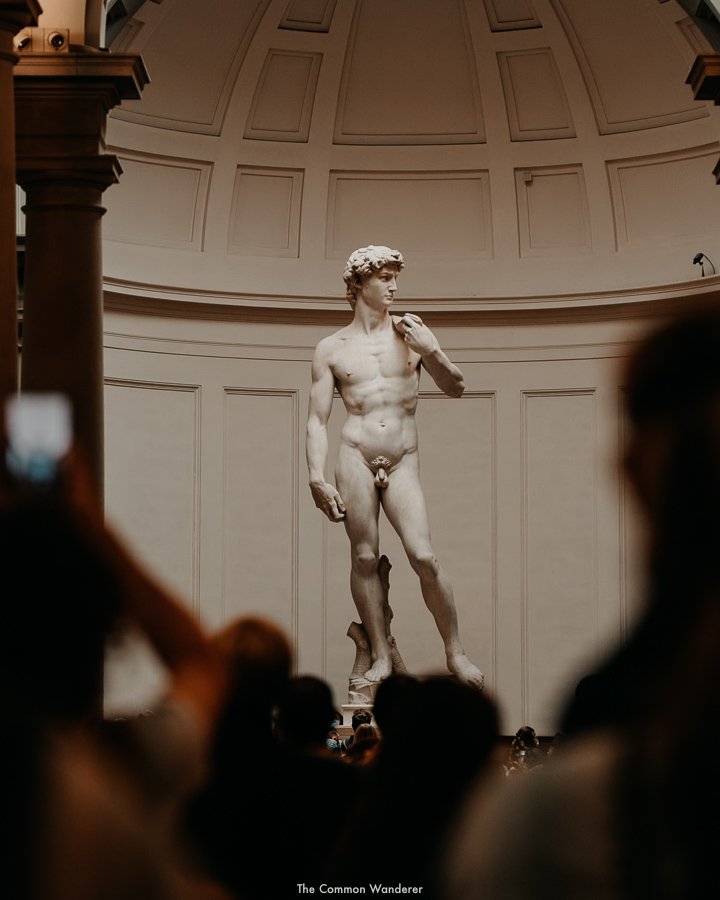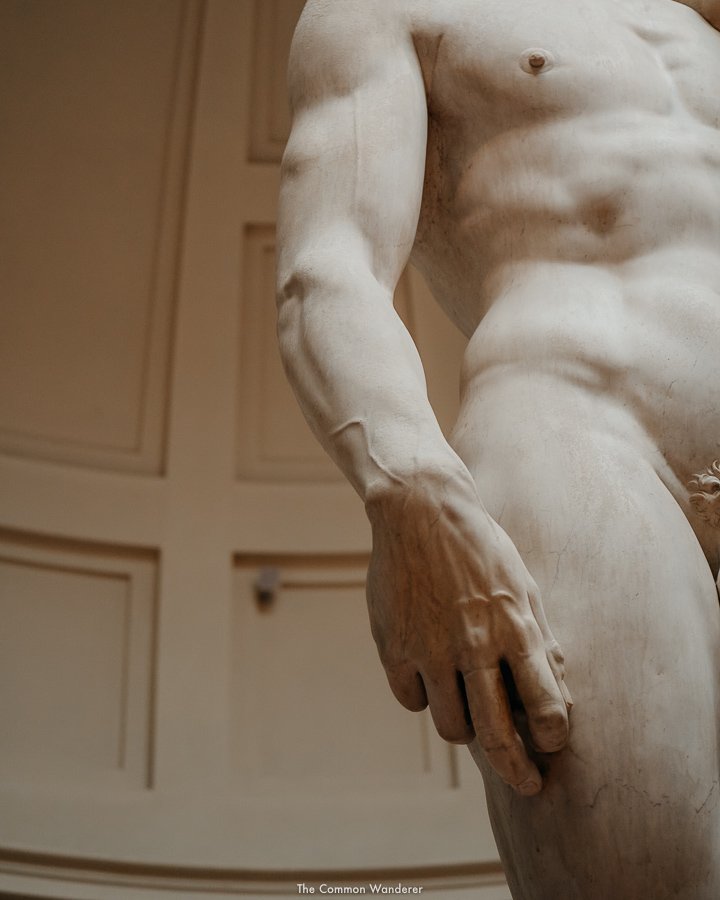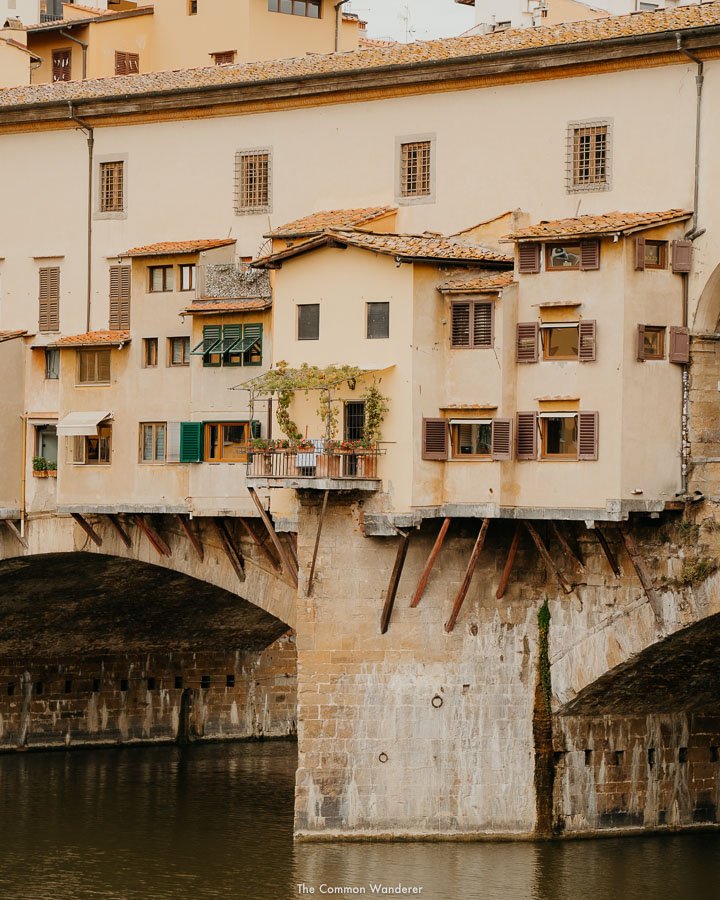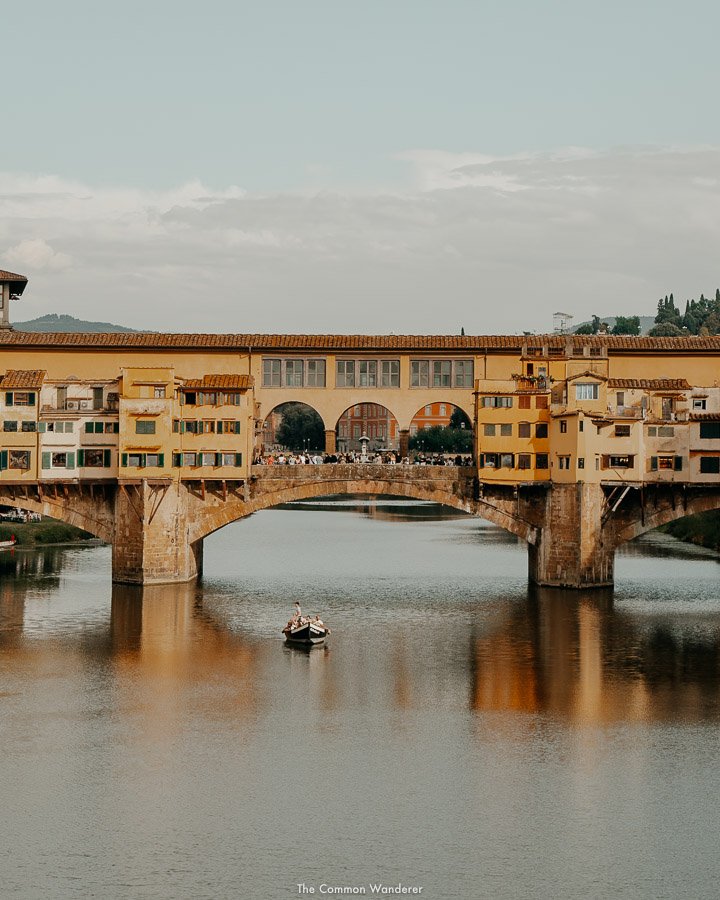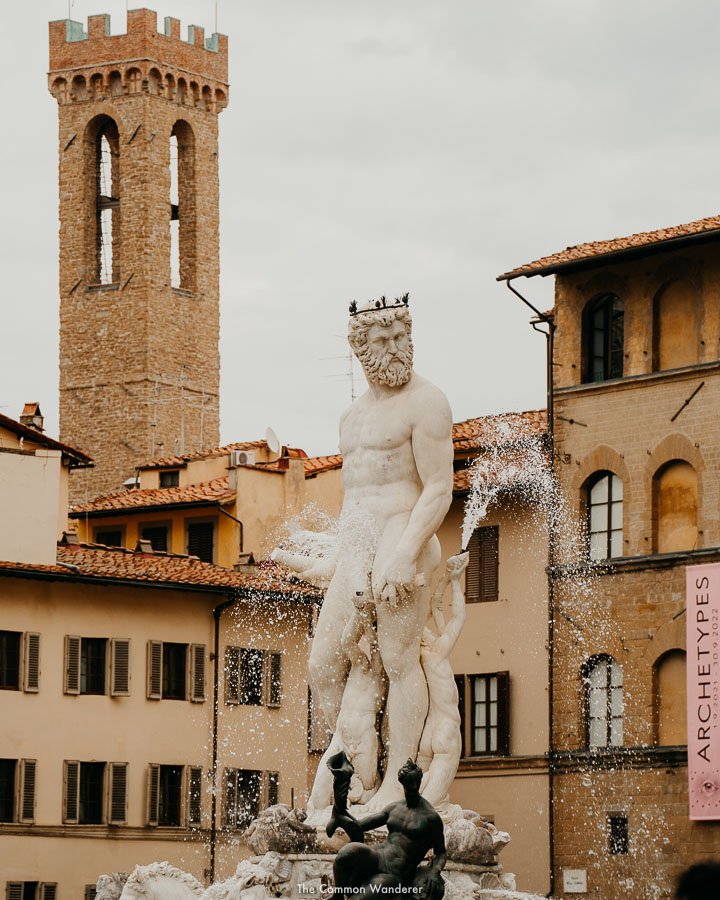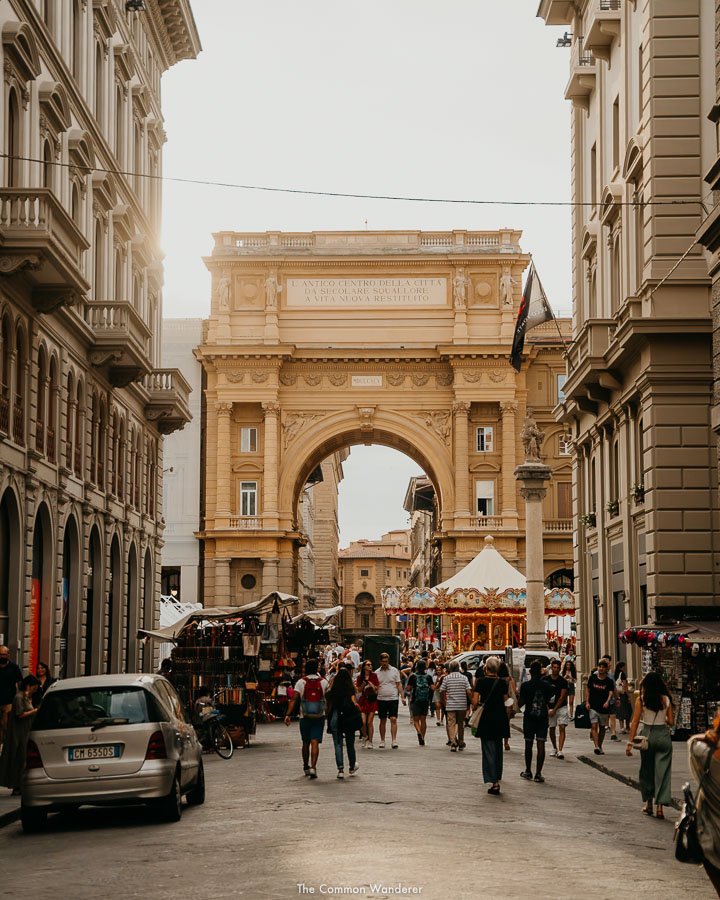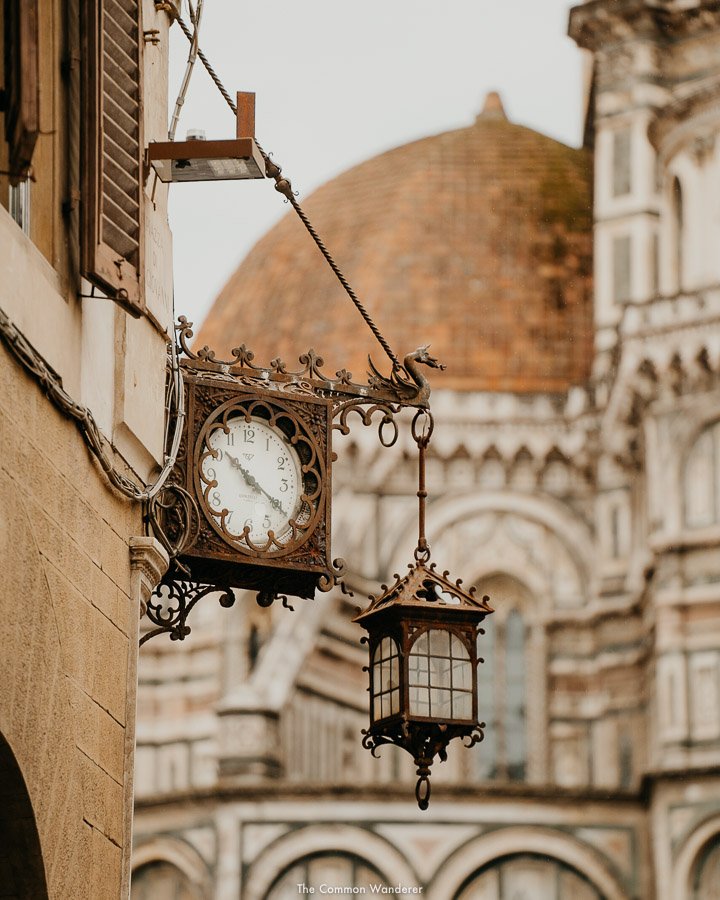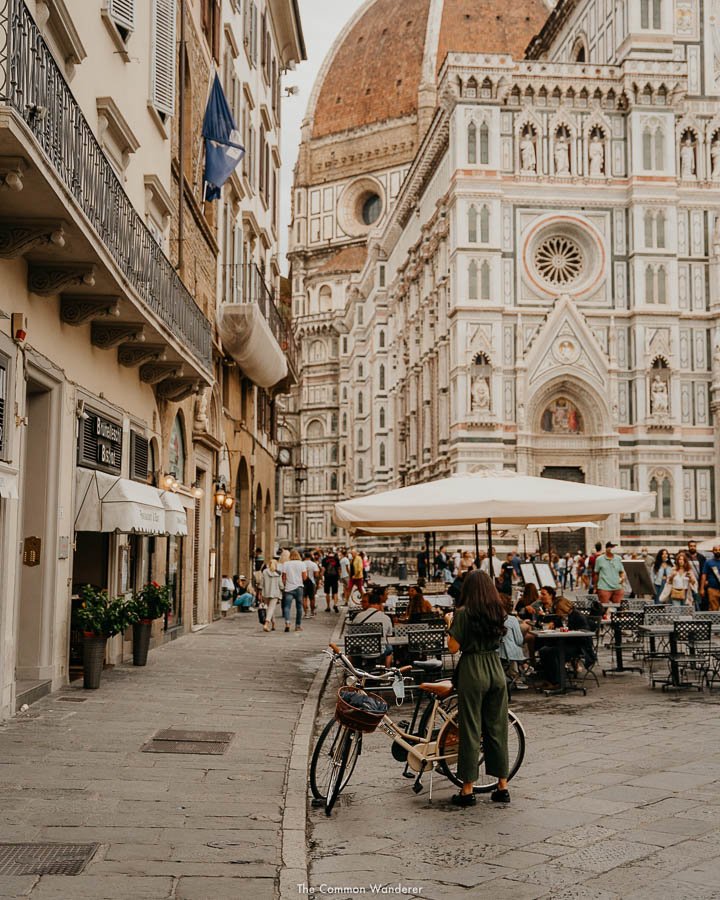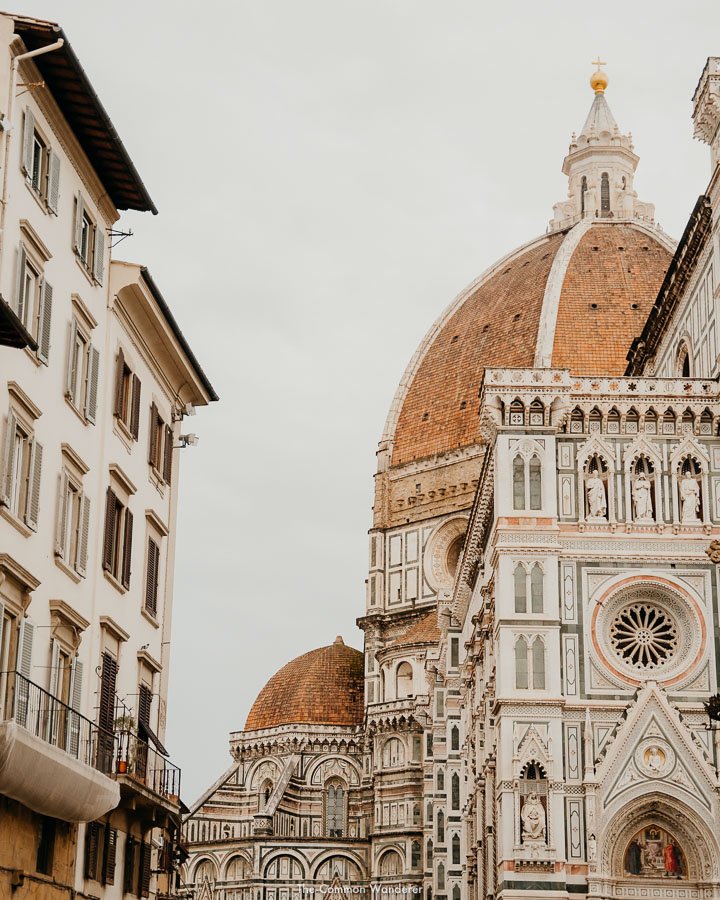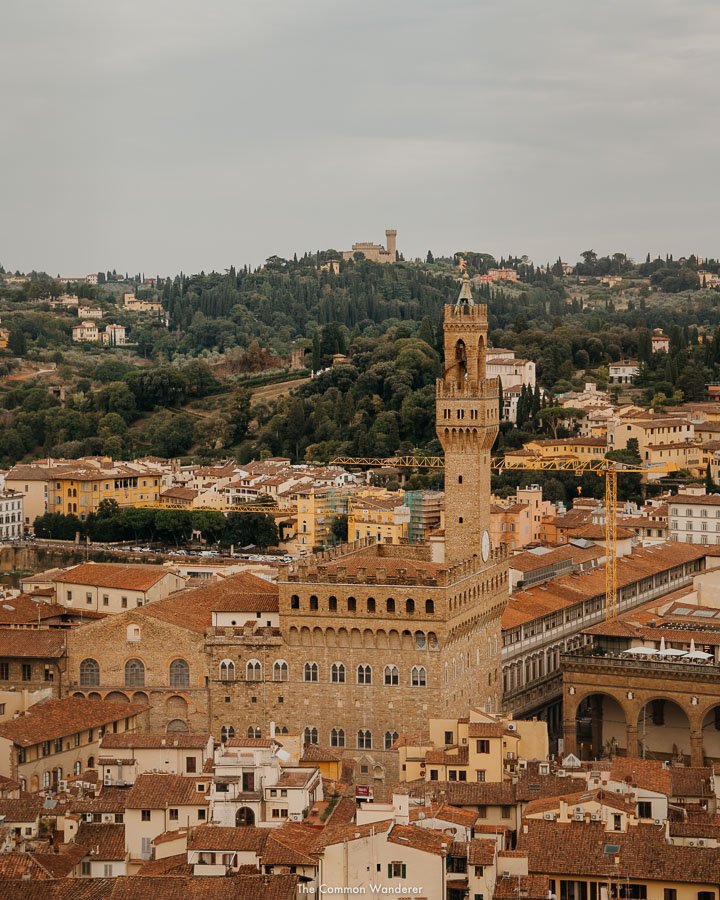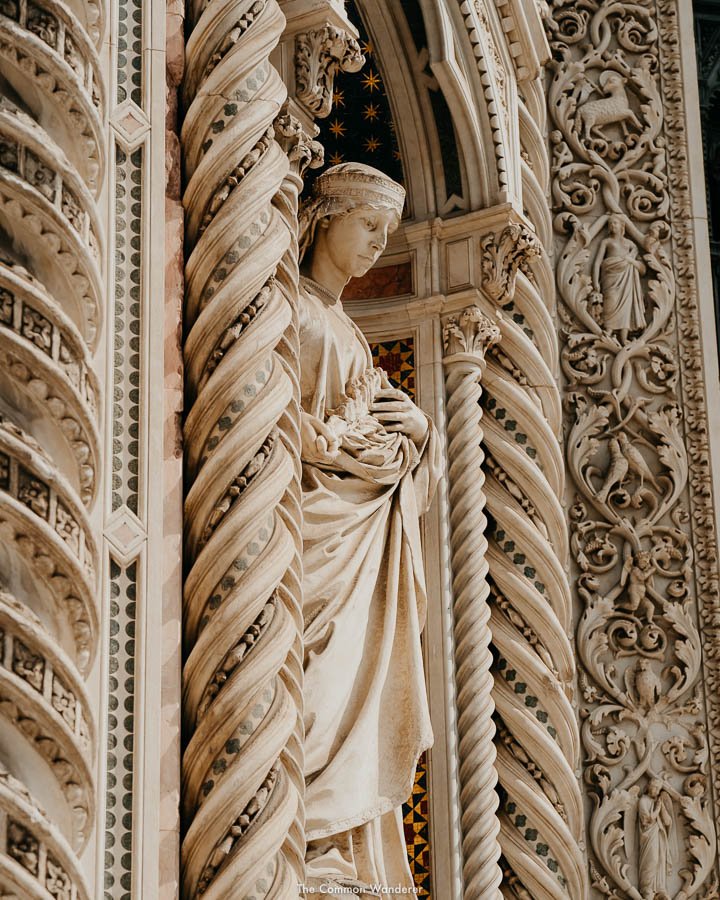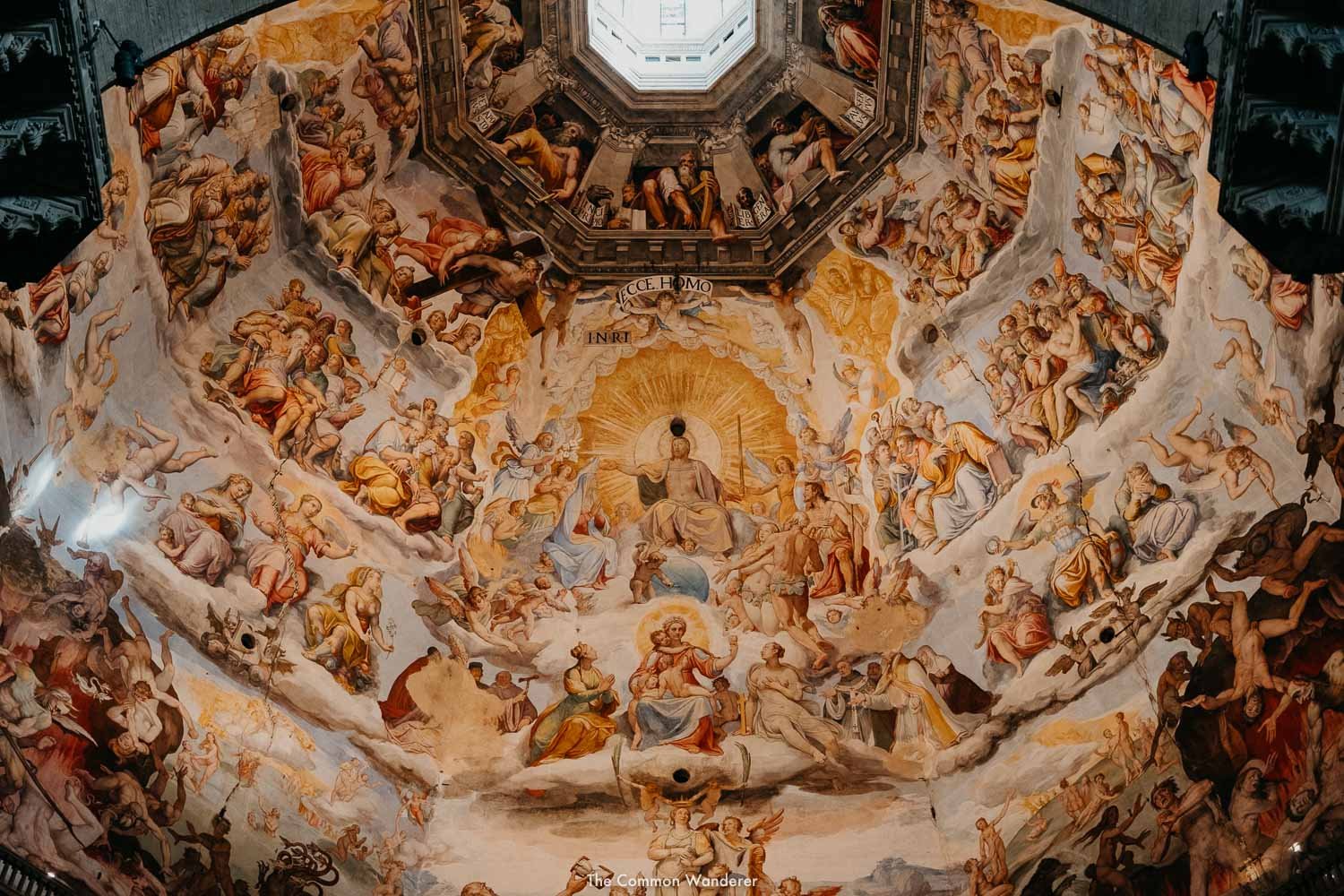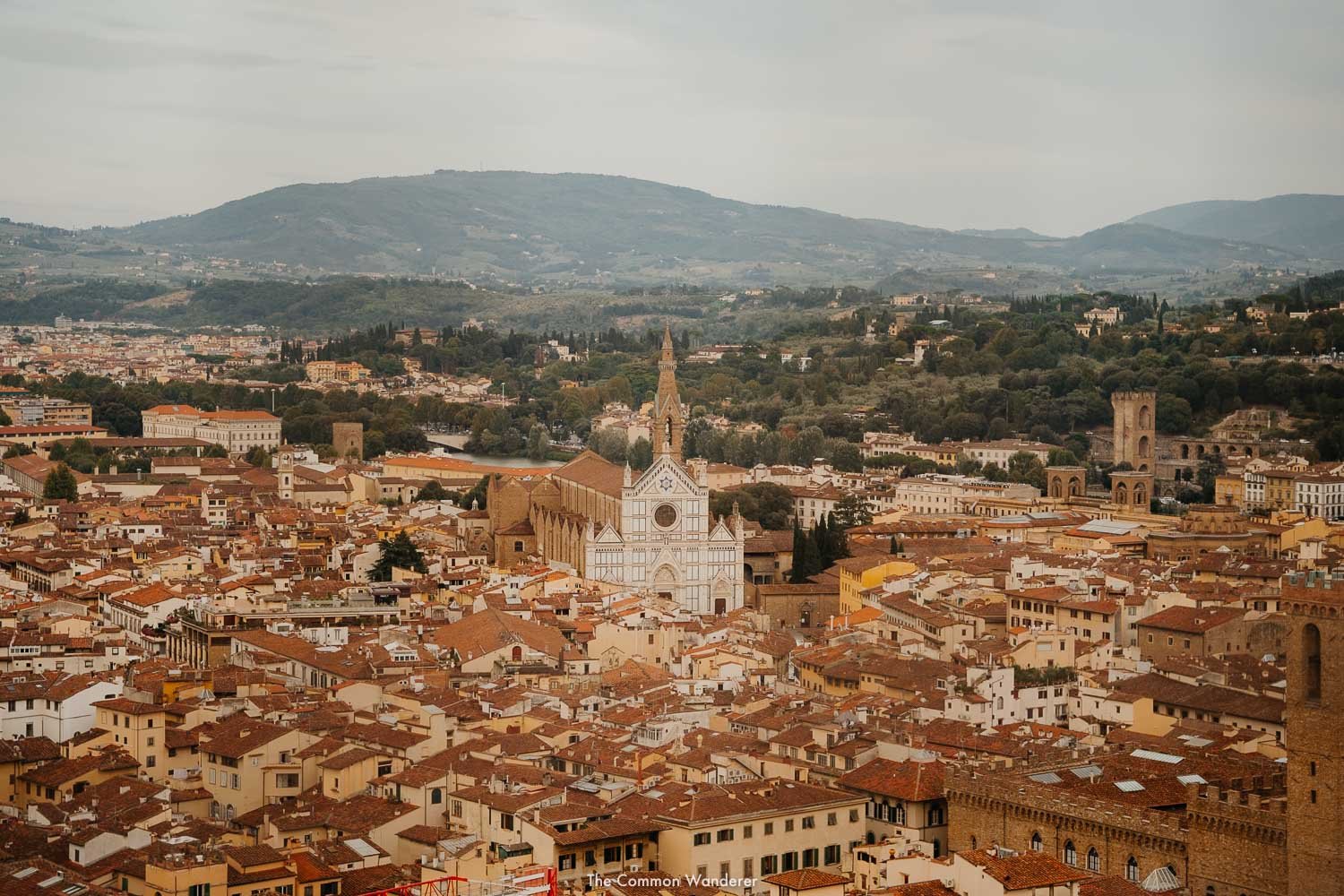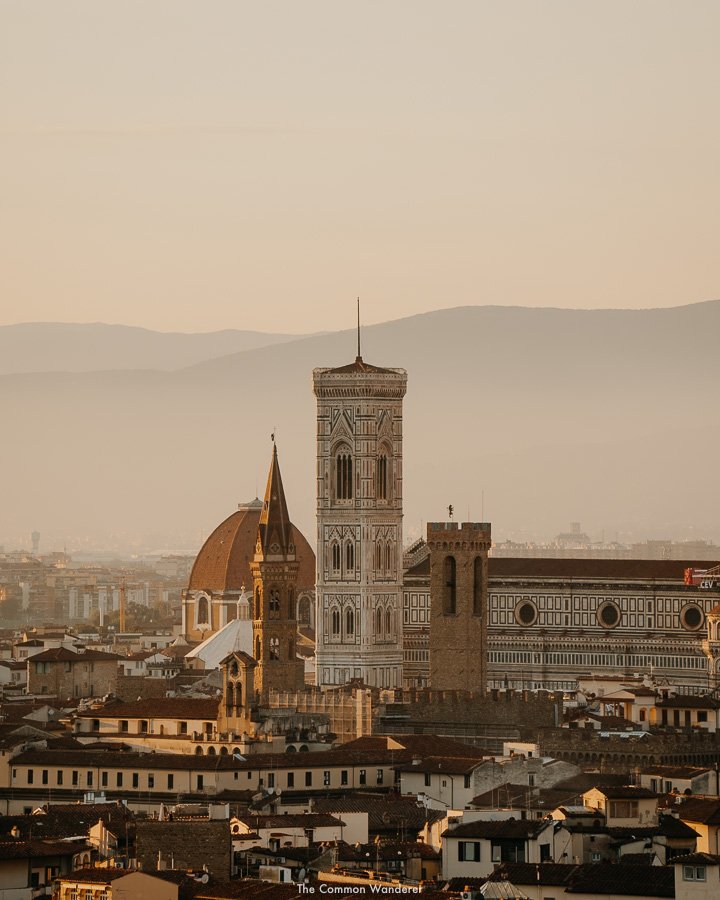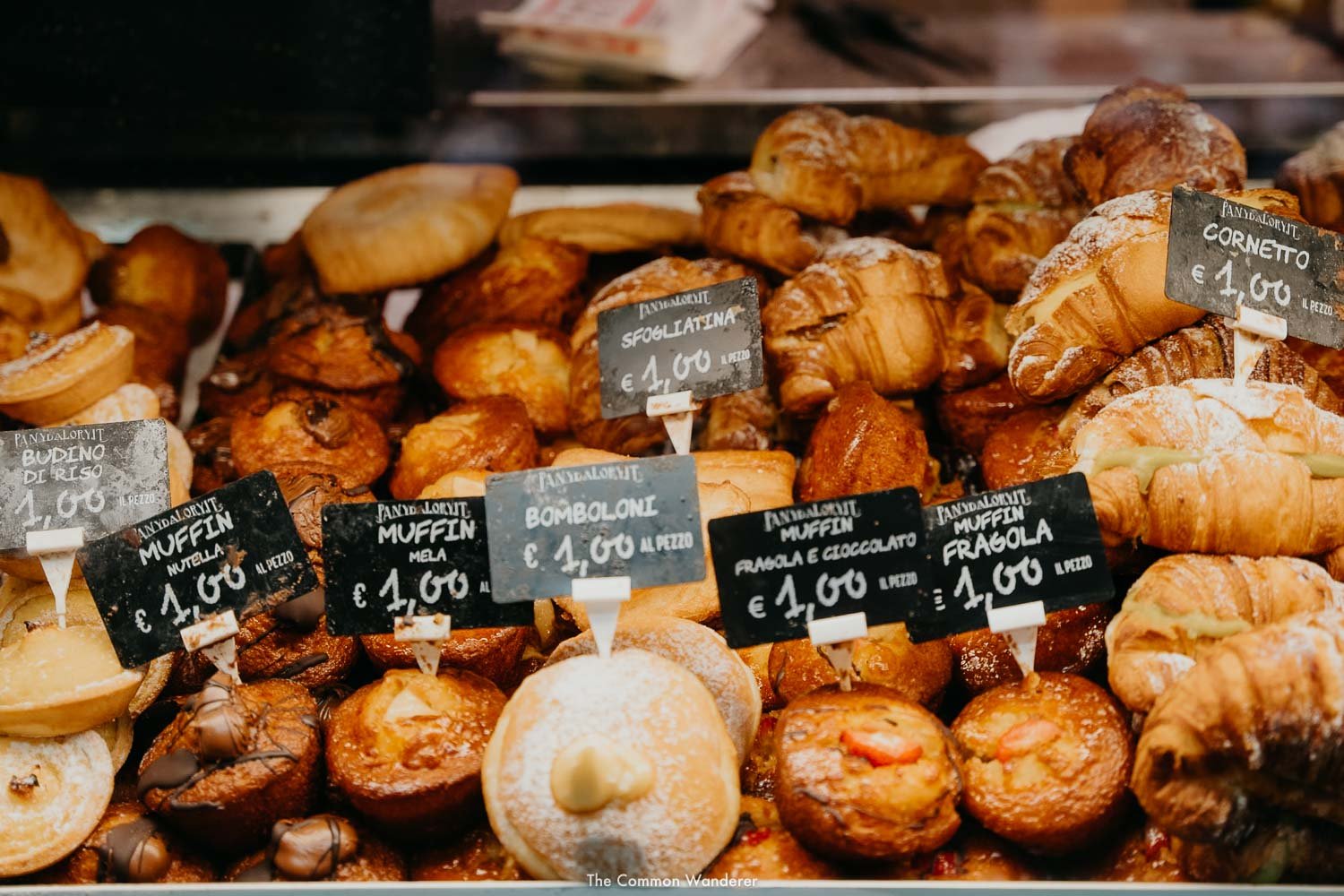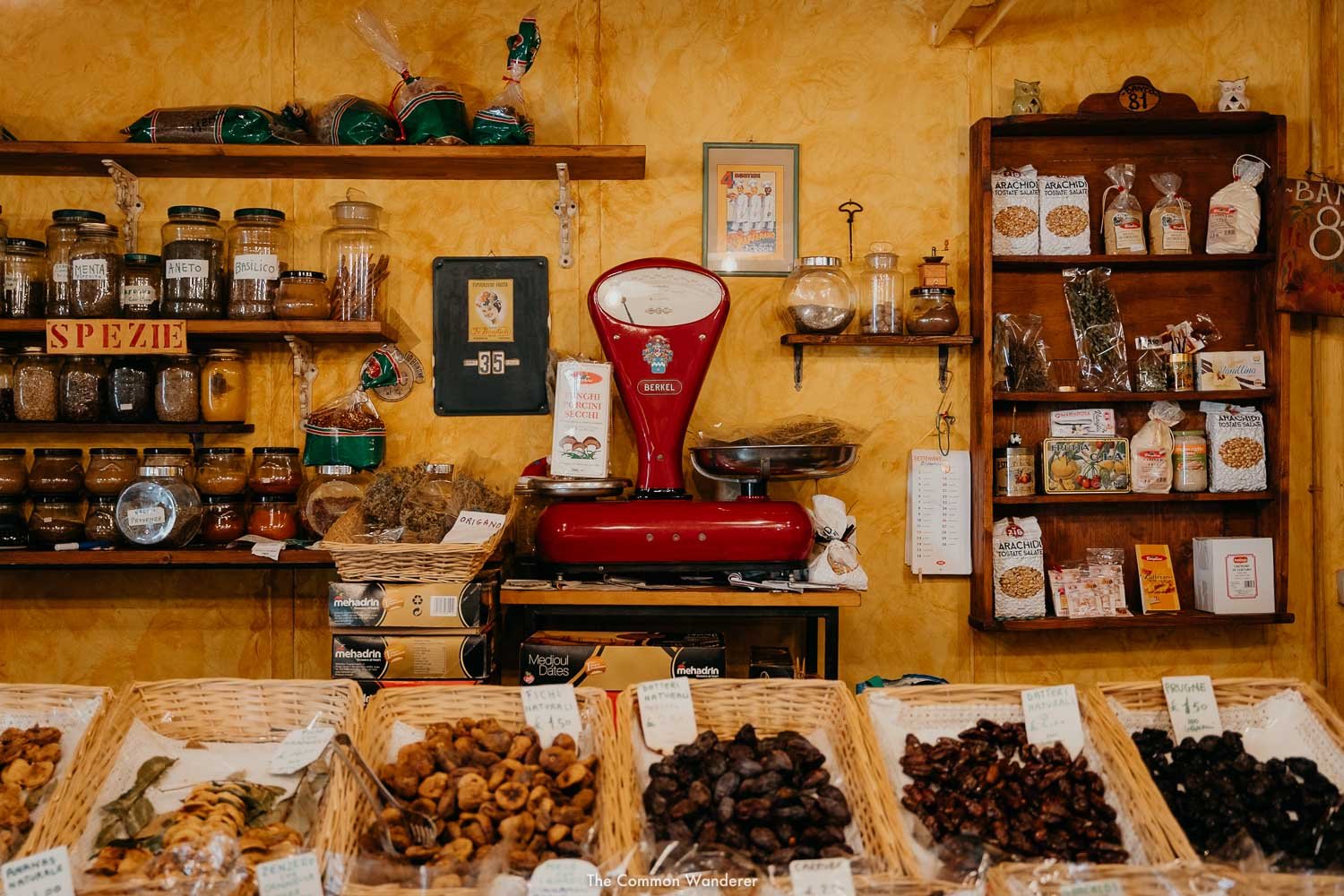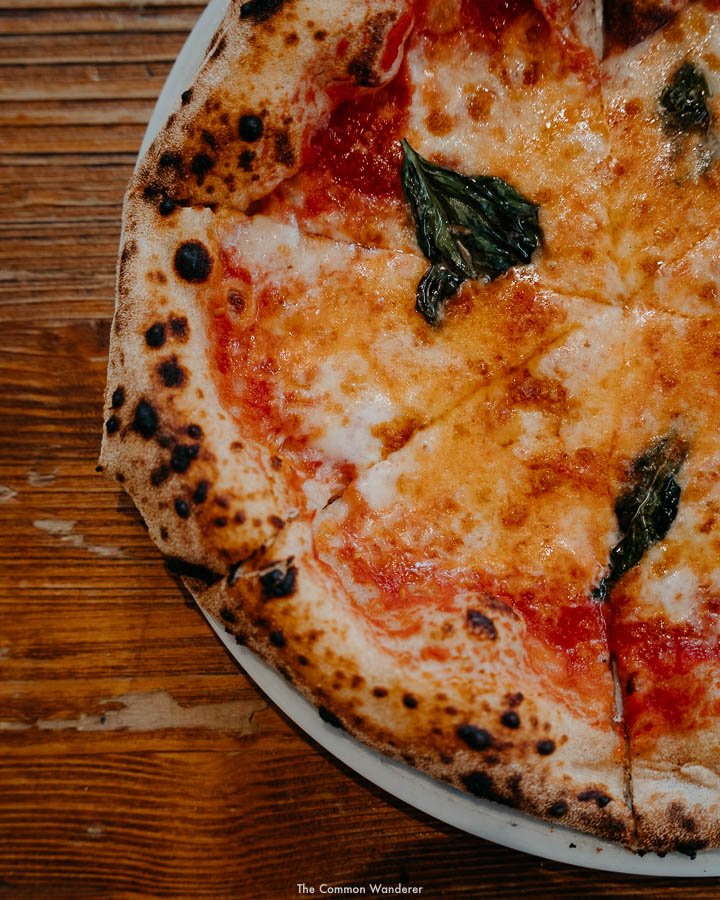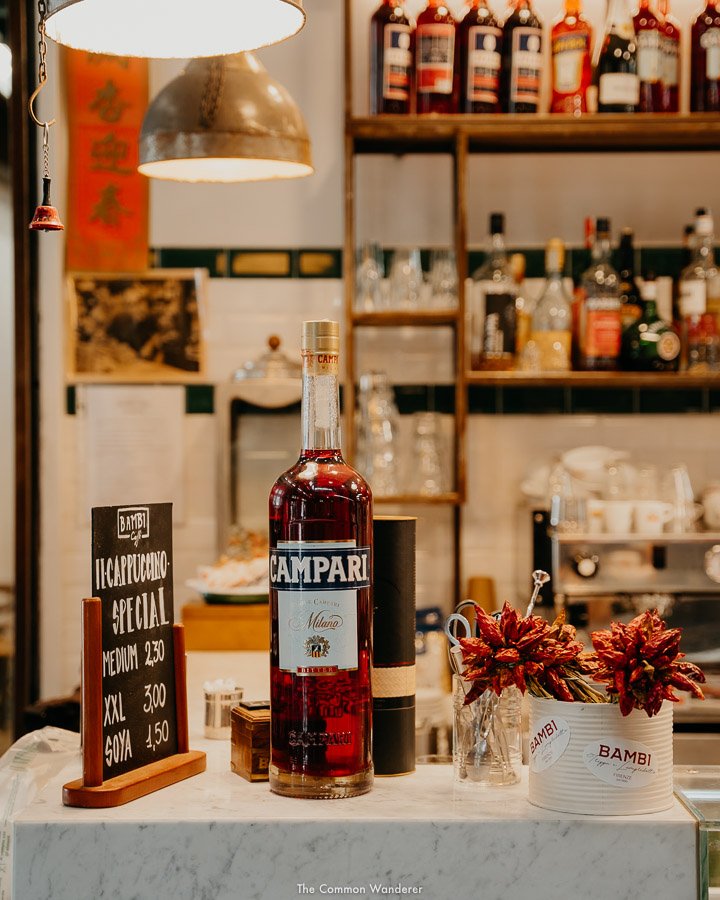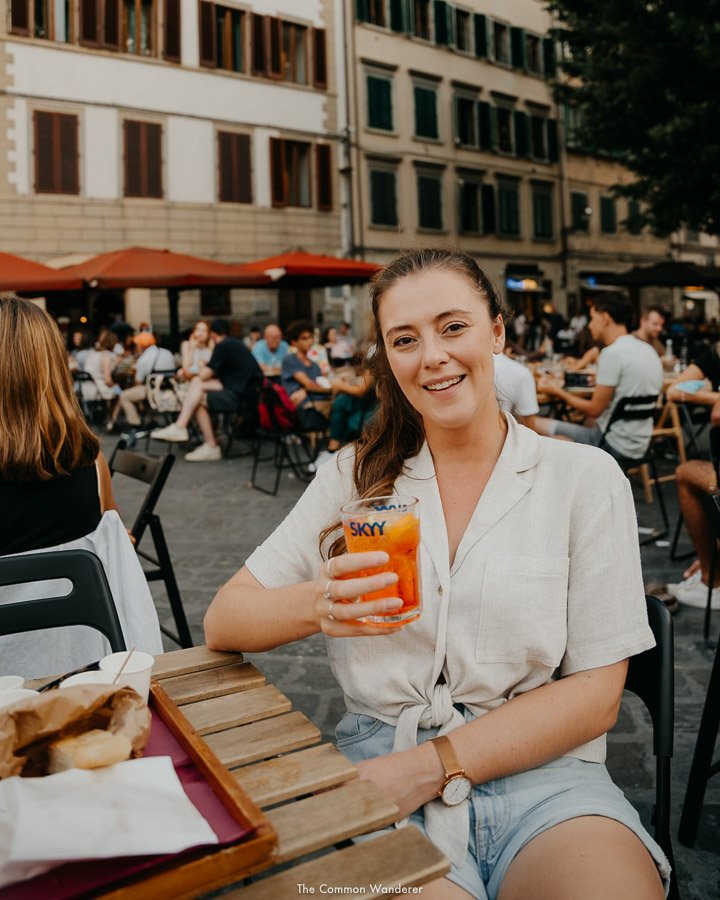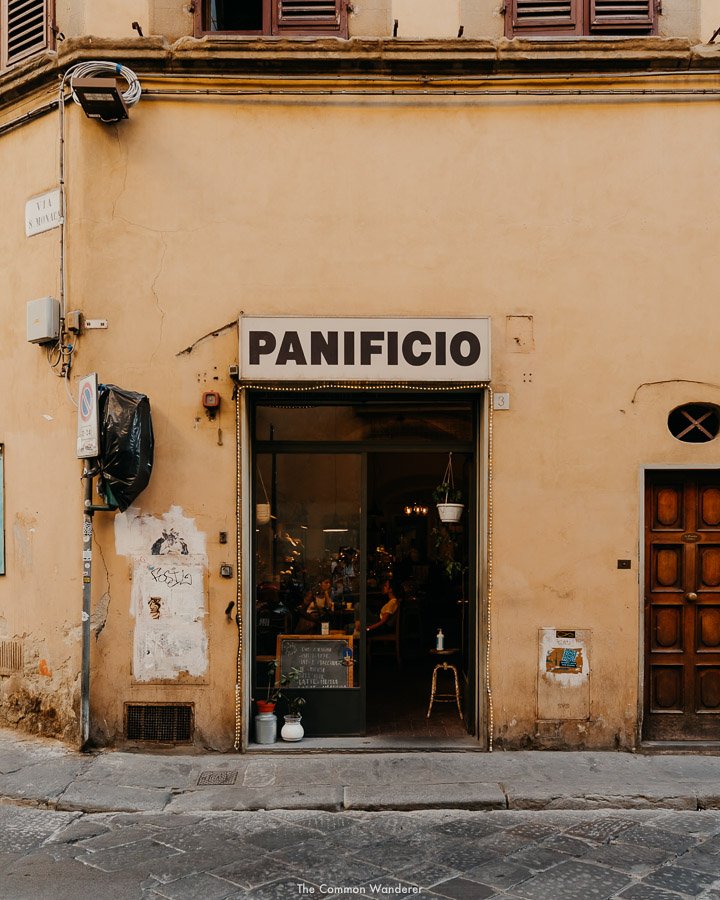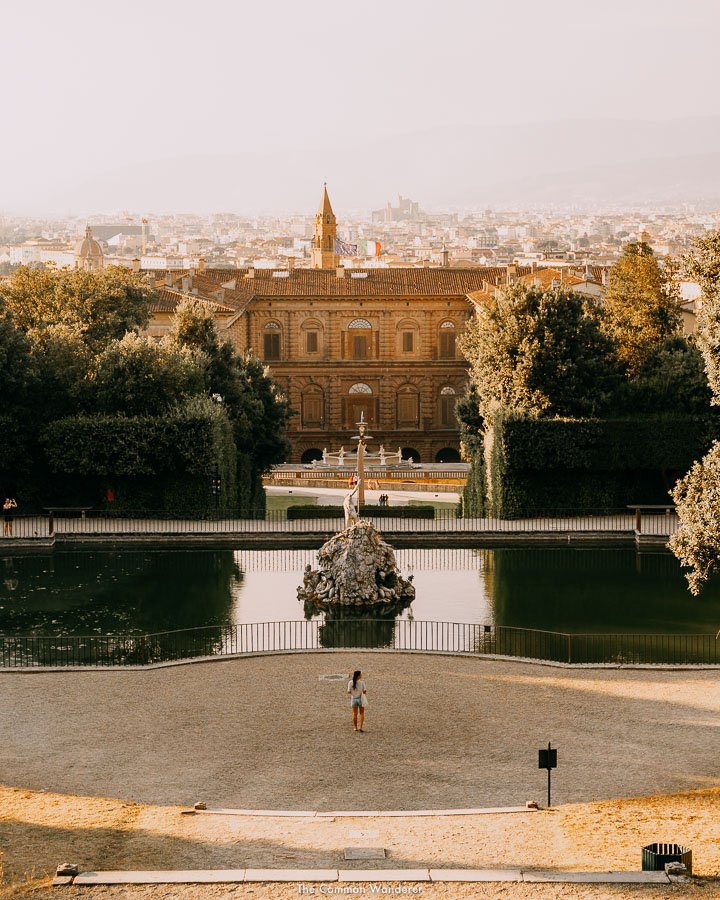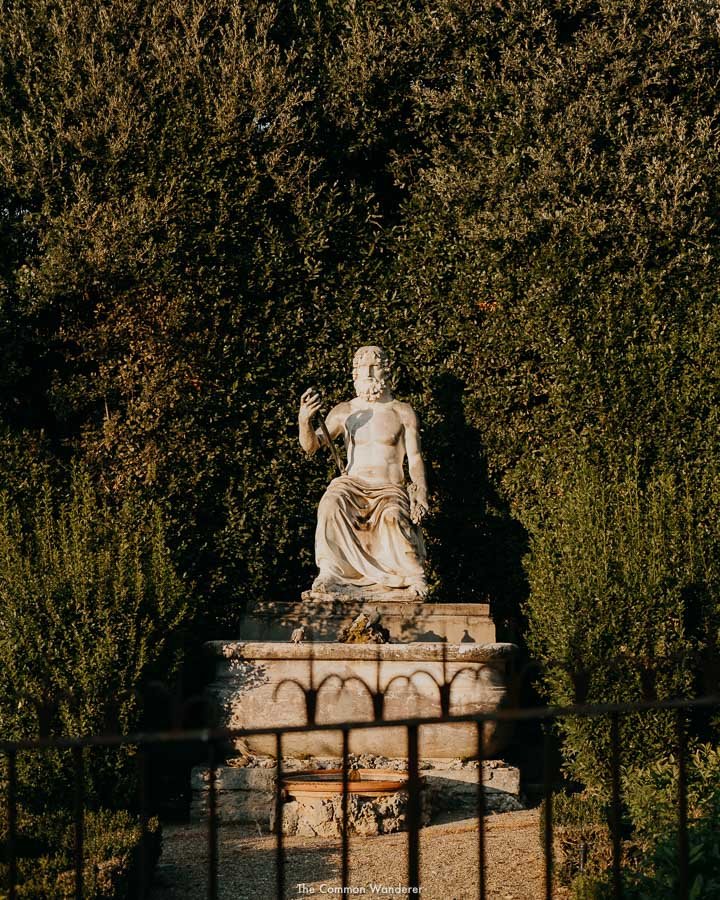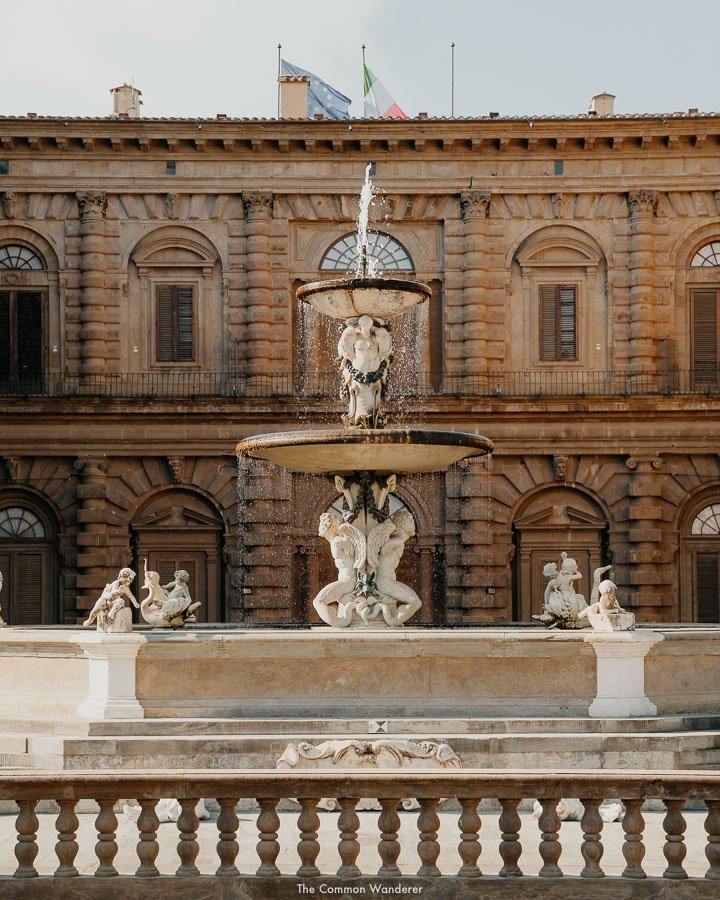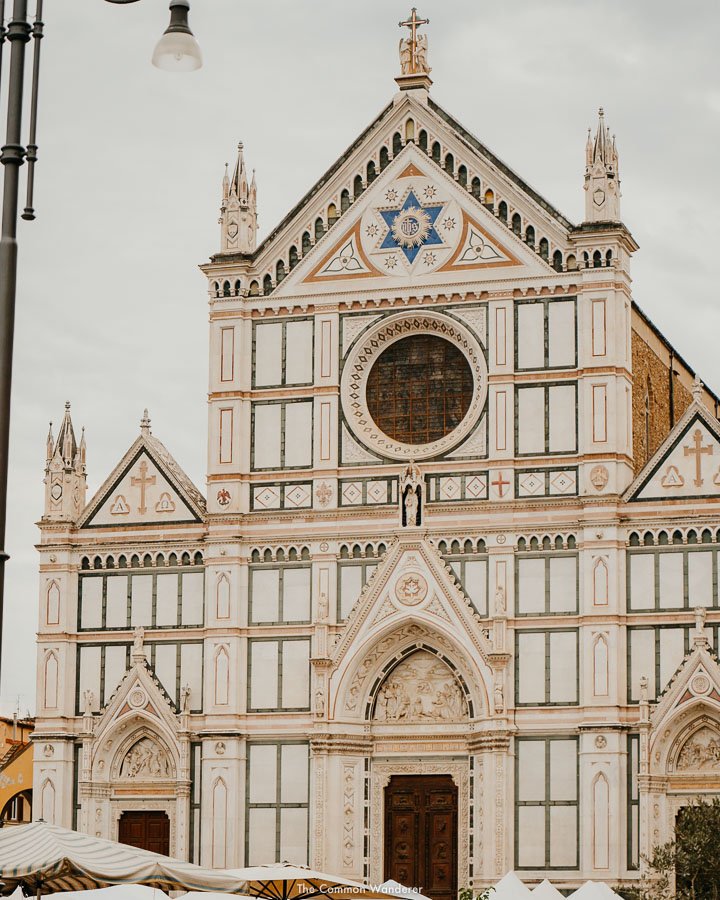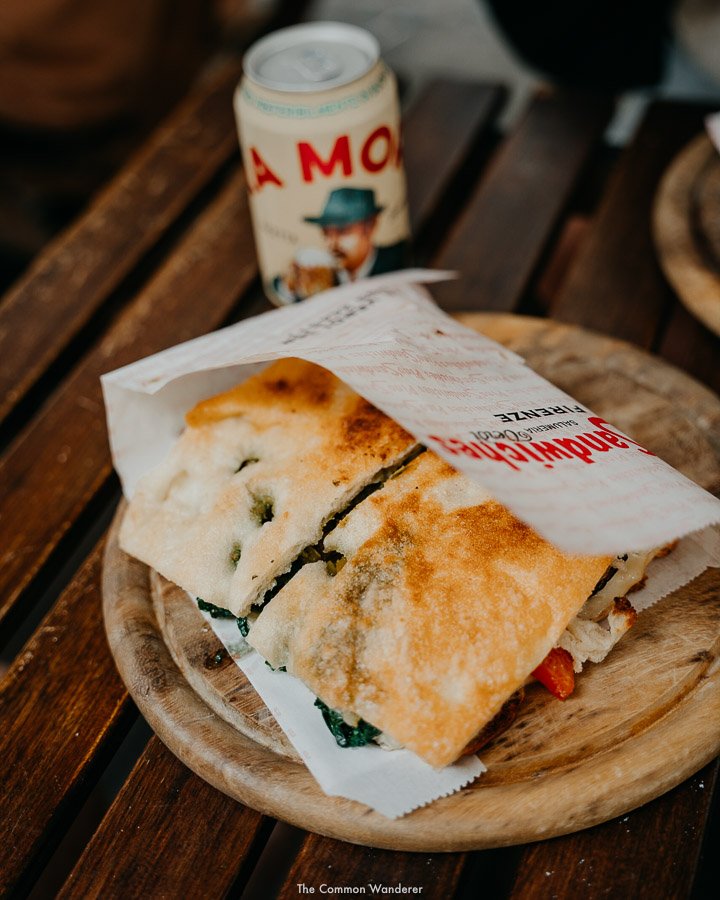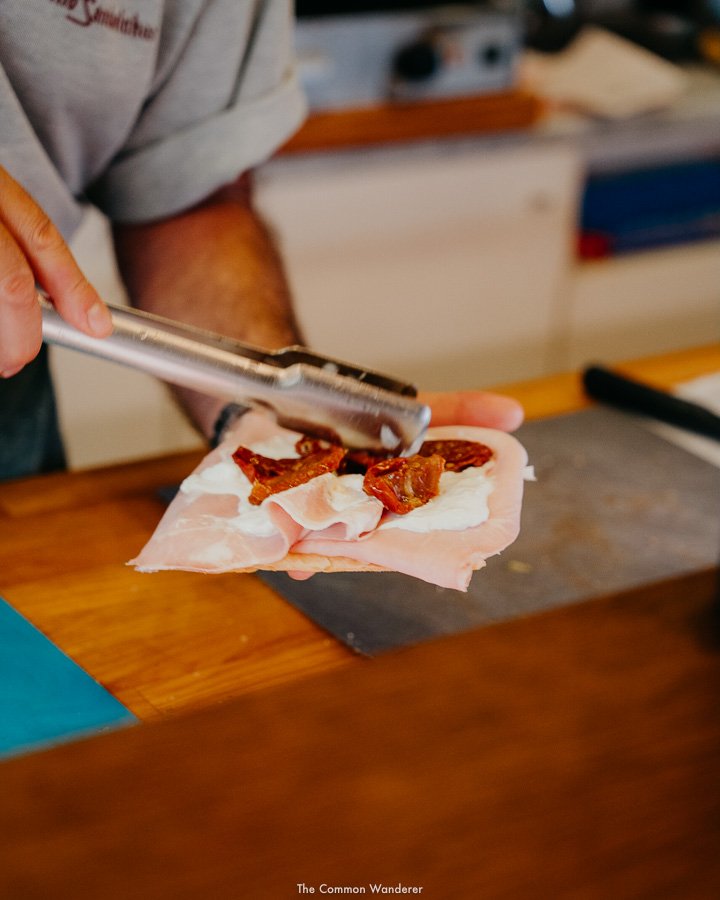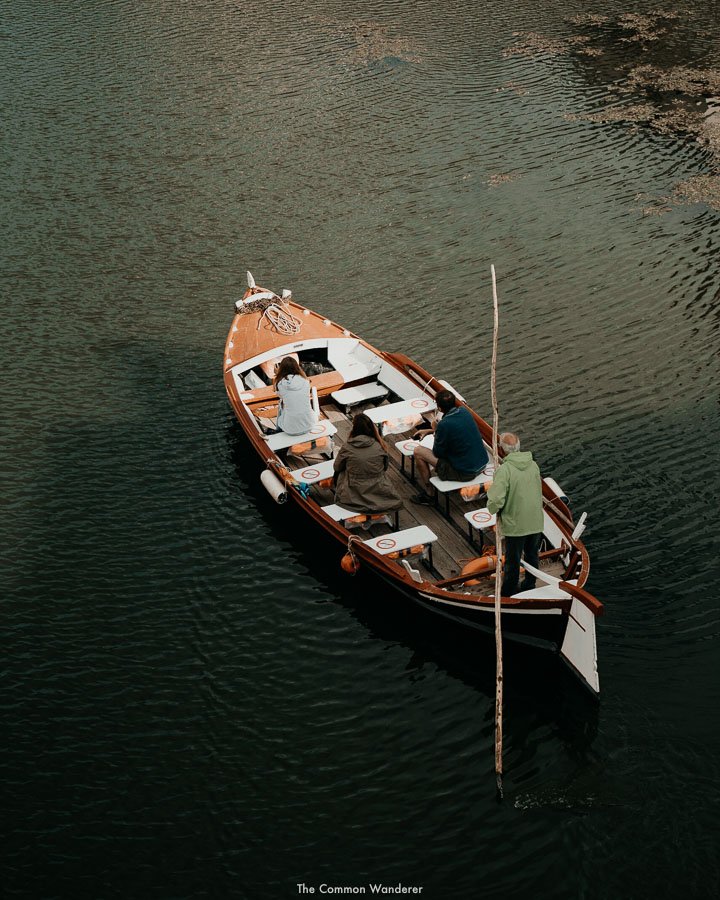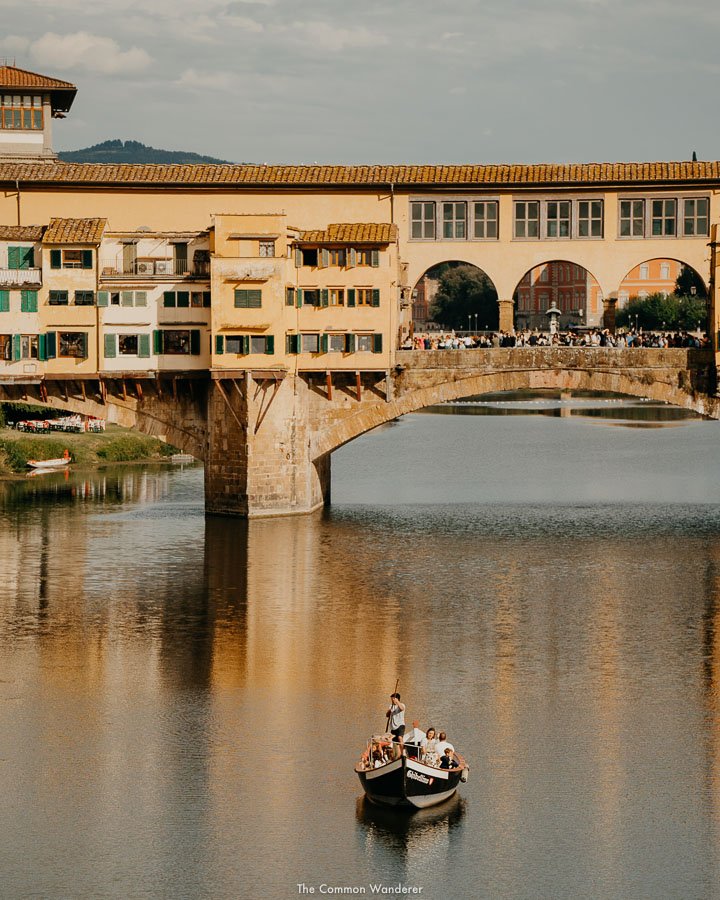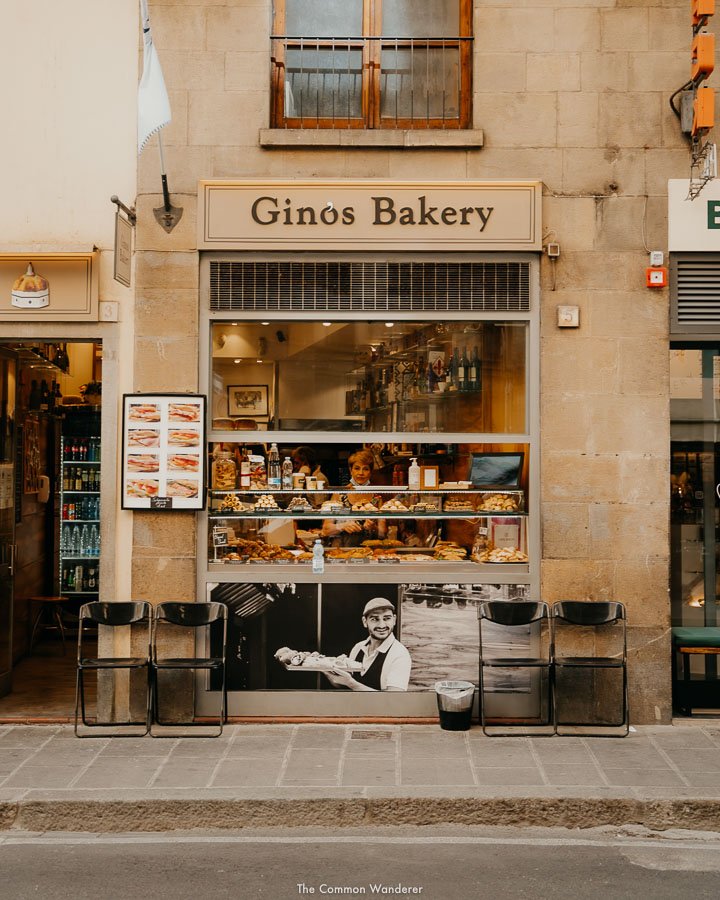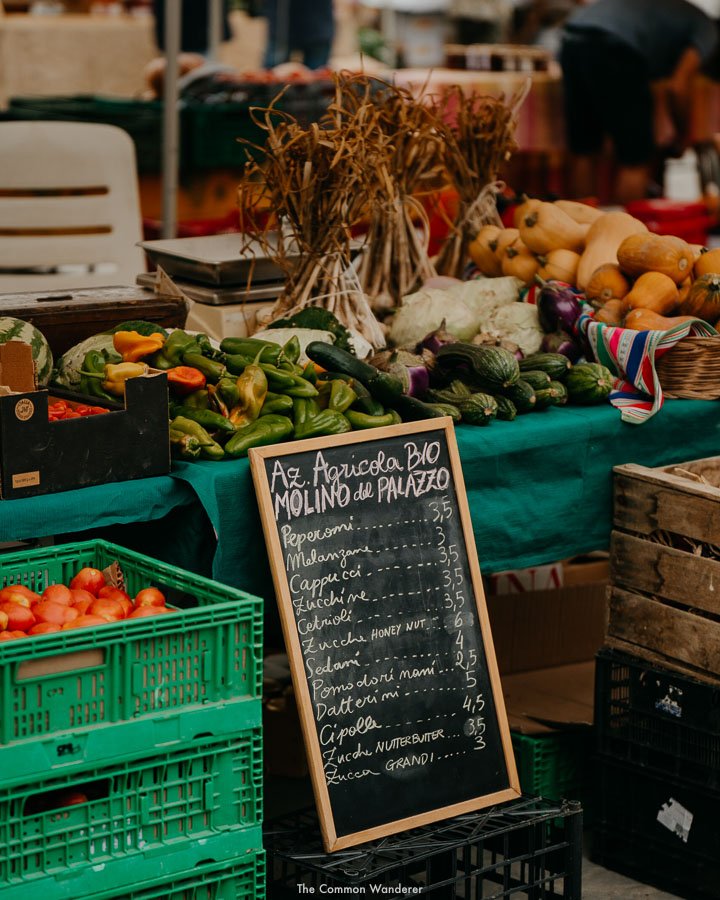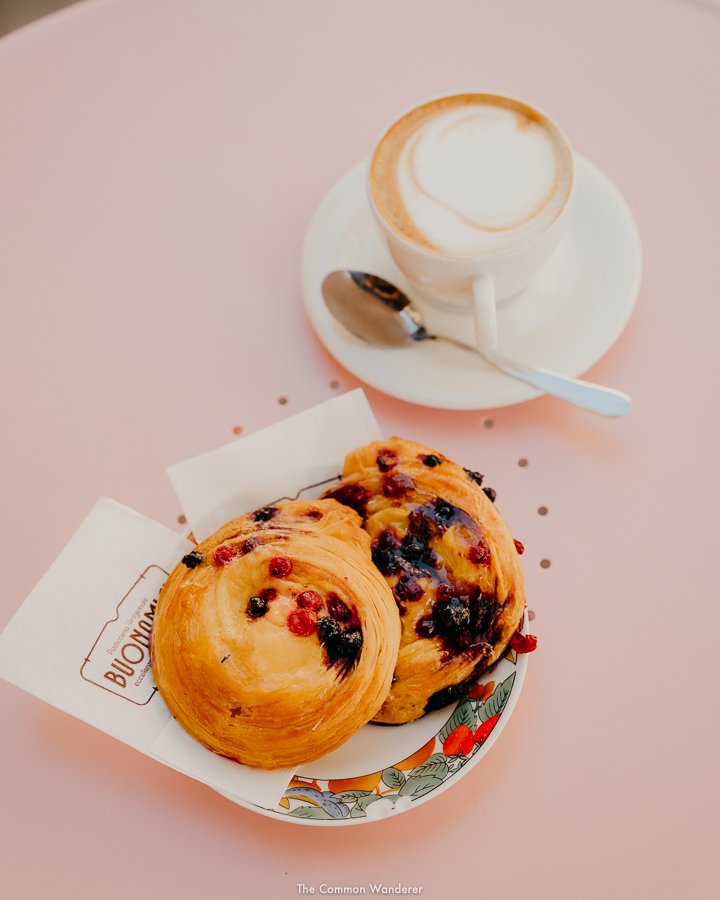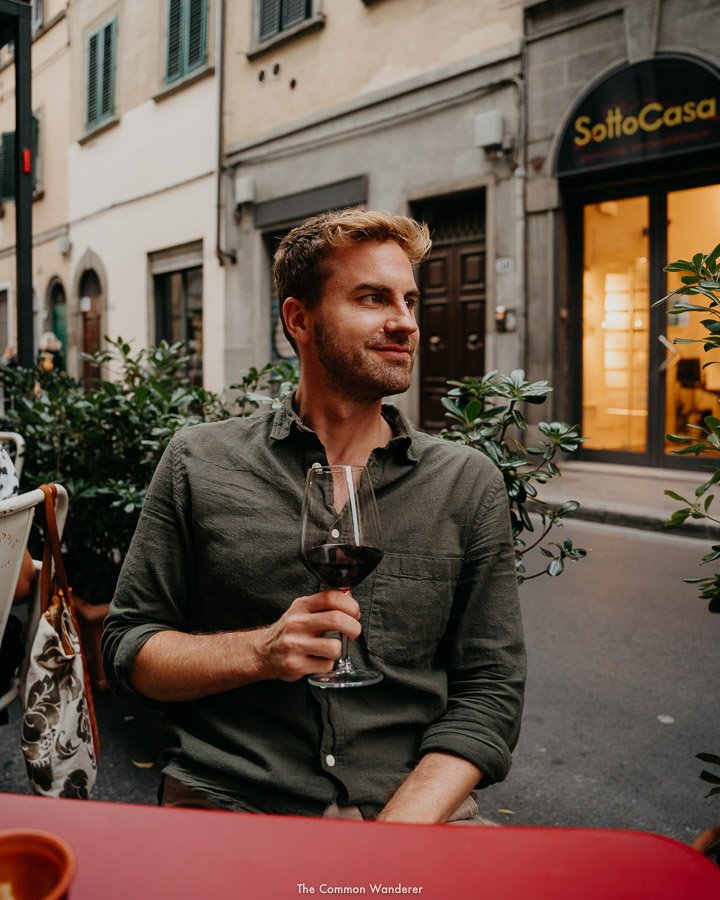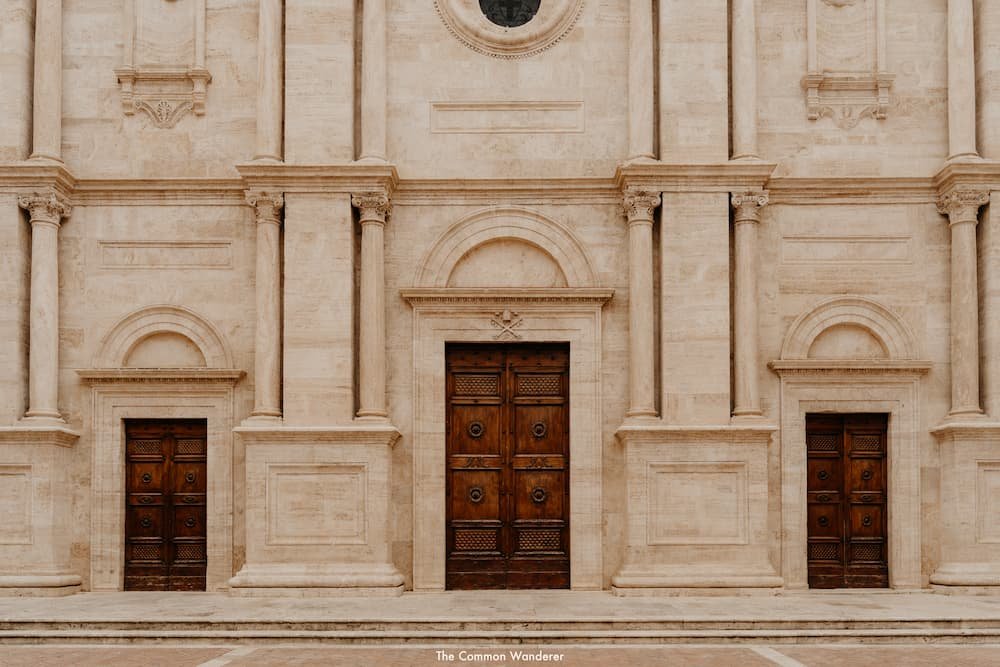17 Incredible Things to do in Florence, The Cradle of the Renaissance
These are the best things to do in Florence, Italy's Renaissance jewel. Explore Florence's must-visit attractions, as well as essential travel information to make the most of your stay.
The cradle of the Renaissance. Home to the most famous pieces of art in the world. Widely regarded as the most beautiful city in Italy.
And yet, we didn’t like Florence after our first visit. Unfortunately, some places just don’t vibe. Cape Town, our forever favourite city, exudes natural beauty, endless spirit and exceptional food and wine offerings, but it’s the intangible that makes it utterly perfect - the sunsets, the friends, the markets, the life.
In our minds, Florence, while beautiful, was Disneyland. No soul. No life. Attractions to tick off and then move on, let’s get to the Cinque Terre.
Five years later, on our second visit, our minds were changed. No, they were shattered.
A week spent in the city opened our eyes to what Florence really is. Yes, it’s the cradle of the Renaissance, home to the most famous pieces of art in the world, and one of the most beautiful cities in Italy.
But it’s so much more than that.
It’s slow sunrise walks on the banks of the Arno. It’s lazy afternoons, Spritz in hand on Piazza Santo Spirito. It’s the best truffle pasta you’ve ever had. It’s truly admiring David and finally understanding why Michelangelo is revered. It’s the afternoon light caressing the Duomo. It’s art, everywhere. It’s sunsets, museums, wine, gelato, finding that perfect leather wallet, the best tour guide… it’s life.
Finally, the intangible burned bright in our minds, and Florence finally made sense.
This guide on the best things to do in Florence aims to share that sense of wonder. Yes, we feature the main tourist attractions that everyone needs to see and do, but we’ve tried to include a deeper, more curated guide to the city - our personal recommendations found discovering the city on our many long days exploring each corner.
From the best things to see, eat and do, plus a selection of our hidden gems, this is our guide to Florence.
LOVE OUR PHOTOS? Edit like us with our European Summers Preset Packs, and mobile video filters, inspired by the warm hues and vibes of summers spent in Europe
PLAN YOUR FLORENCE TRIP | TOP HOTELS, TOURS & TIPS
Short on time? Below are our recommended hotels & hostels, tours, and insurance to help you plan an incredible trip to Florence!
TOP RATED TOURS & EXPERIENCES IN FLORENCE
| Admire David & the Accademia with this excellent tour| Guided tour of Brunelleschi's Dome + Florence Cathedral
| Skip-the-line + guided tour at the Uffizi Gallery
| Florence foodie tour discovering Tuscan culinary delights
| Florentine cooking class
RECOMMENDED HOTELS IN FLORENCE
LUXURY | Dimora Palanca
BOUTIQUE | Hotel 25 Hours Florence
BEST VALUE | Alfieri9 Florence
BEST HOSTEL | Ostello Bello
GETTING TO FLORENCE
Find the best car rental rates here. We suggest booking ahead of time to secure your rental OR, find train tickets on Omio or Trainline...AND don't forget your travel insurance! Get comprehensive travel + medical insurance, an app with 24-hour medical support, and no out-of-pocket fees with HeyMondo
WHERE TO STAY IN FLORENCE
DIMORA PALANCA
High-end luxury personified, Dimora Palanca is one of the best hotels in Florence for art lovers and cosmopolitan travellers in the heart of the city. A stay here is for those who love the finer things in life.
BOOK | Dimora Palanca
HOTEL 25 HOURS FLORENCE
Once a monastery complex, 25Hours Florence one of the coolest venues on the Florentine hotel scene, inspired by Dante’s Divine Comedy.
This 4* property has plenty to marvel at every corner: 'heaven-or-hell '-themed rooms, huge multi-coloured spaces filled with eclectically retro furnishings and graffiti, and finally, a classic Cinema Paradiso.
BOOK | 25Hours Florence
ALFIERI9 FLORENCE
Alfieri9 is the best budget hotel in town, perfect for a comfortable and stylish city break in Florence. From quirky wall art and funky light fixtures to elegant furnishings, this sleek boutique hotel has everything you might need and it is within walking distance of all the best restaurants and tourist attractions.
BOOK | Alfieri9
TOP SIGHTS TO SEE IN FLORENCE
WATCH THE SUNSET FROM PIAZZALE MICHELANGELO
As the day's warmth mellows into hues of amber and tangerine, we join throngs of travellers and locals alike at Piazzale Michelangelo, each here to witness Florence’s heavenly dance with the setting sun.
The iconic dome of the Florence Cathedral stands silhouetted against the sky, watching over the city. The Arno River winds lazily through the city, its waters glistening in the fading light. The Ponte Vecchio stretches gracefully across the river, its shops and houses clinging to its sides like barnacles on a ship's hull.
People gather around, sharing this moment, capturing it with cameras, or simply savouring the view, jaw to the floor. Florence's lights begin to twinkle, one by one, like stars in a city made for dreamers. As the sun bids goodbye, Mim whispers in my ear - “I get it now. Florence finally makes sense”.
Watching sunset at Piazzale Michelangelo is one of the most popular things to do in Florence, so here’s the practical information to help you enjoy the views for yourself.
Firstly, it gets busy… very busy, so we suggest arriving at least an hour before sunset to find your spot. Bring some beers, pack and picnic, and settle in for the show.
To get there, we suggest taking the stairs commencing from Piazza Guiseppe Poggi/Porta San Niccolò - it’s a hard slog, but it’ll get you there quickly. Alternatively, take the scenic route through the streets leading to Porta San Miniato, and up the stairs past the Rose Garden.
For those short of time, bus routes 12 & 13 take you directly to the square and return to either Santa Maria Novella station via Santa Croce (12), or to Santa Maria Novella station via the Oltrarno district/Boboli Gardens. More info here.
THE DETAILS
Where | Piazzale Michelangelo, Florence
How to get there | Taking the stairs commencing from Piazza Guiseppe Poggi/Porta San Niccolò, or via bus routes 12 & 13 from Santa Maria Novella station via Santa Croce (12), or to Santa Maria Novella station via the Oltrarno district/Boboli Gardens
ADMIRE HISTORY’S GREATEST ART IN THE UFFIZI GALLERY
Like a Renaissance time-traveller's portal, a walk through the storied corridors of the Uffizi Gallery is an essential thing to do in Florence.
One of the pre-eminent art galleries in the world, the Uffizi Gallery was designed in the mid-16th century, originally intended to house the administrative offices ("Uffizi" means offices in Italian) of the Florentine government, until the Medici family decided to use this space for their substantial art collection.
Under Medici's patronage, it became one of the world's first public museums and led to the belief that art and knowledge would be accessible to all (thanks, guys!).
So, on our second visit to Florence, we embraced the Medici ideals and finally entered these hallowed walls.
The gallery itself jostles for attention with its most famous pieces. With frescoed walls, marbled stairs, grand halls, and large windows; it’s an inviting space not unlike the Louvre.
But we’re here for the art, and we start on the first floor, home to artists like Botticelli, Michelangelo, Raphael, and Titian. We admire Botticelli's famed Primavera, which blooms eternal, capturing the essence of rebirth and transformation.
The Birth of Venus is our favourite - a goddess afloat on a scallop shell, hair aflow, and heavenly as the morning mist. Da Vinci's smile in the Annunciation hints at the mysteries of human existence (and there are many), much like Mark’s smile when he’s up to no good.
Everywhere we turn, another piece of art from our high school textbooks.
Raphael's Madonna of the Goldfinch exudes maternal tenderness, while Caravaggio's chiaroscuro (light & dark) mastery in Medusa leaves us speechless. Michelangelo's Doni Tondo exudes a raw emotion that reverberates through the ages.
The highlight, though, is the Tribune, a grand, gilded, room that holds the Medici's most precious works.
In the end, we spend over three hours here, slowly making our way through two floors, 45 rooms and 1,500 works of art.
Due to its popularity, the Uffizi is understandably busy, so we suggest booking your tickets well in advance, and for the earliest (or latest) time slot possible. You can do so on the official website here. You can also book skip-the-line access to the gallery here.
Alternatively, this popular guided tour is well worth the money, providing expert oversight on the works of the Uffizi, and skip-the-line access.
THE DETAILS
Where | Uffizi Gallery, close to Piazza della Signoria, and Ponte Vecchio
Cost | €26 per person (2023). For an additional €4 charge, you can book an advanced ticket for a specific time. However, you still must line up at the ticket office for your printed ticket, which can take time. For fast, skip-the-line entry tickets, book here
Opening Hours | From Tuesday to Sunday, 8.15 am to 6.30 pm
Tip | Arrive early to avoid crowds. Photography is generally allowed, but the use of flash and tripods is not permitted
BOOK | This popular Uffizi Gallery guided tour or skip-the-line entry tickets
EXPLORE FLORENCE’S OTHER MUSEUMS
Beyond the prestige of the Uffizi, Florence is home to a diverse range of incredible museums that are also worth your time.
Below are three additional museums and galleries we suggest to visit.
PALAZZO STROZZI
In our opinion, Renaissance art, while wonderful, becomes a little same same after a while. There are only so many depictions of religious and mythological scenes that we can see before our minds start to demand something more exciting.
Step up Strozzi Palace, Florence’s home of contemporary art. Set in a stunning Renaissance palace commissioned by the wealthy Strozzi family in the 15th century, it now houses an ever-changing array of exhibitions, events, and activities.
Its focus is on showcasing contemporary art, including previous exhibitions by modern visionaries such as Ai Wei Wei, Marina Abramović and Jeff Koons, which perfectly contrast with the grand rooms of the Palace.
The palazzo's open courtyard and imposing exterior make it a fitting setting for art exhibitions that seamlessly merge the historical and the modern in Florence.
In our opinion, you can’t miss visiting.
PALAZZO PITTI
Set in a grand Renaissance palace that was the former residence of the Medici family, the imposing Pitti Palace houses an interesting collection of art that spans centuries and genres.
The palace interiors are lavishly decorated with opulent furnishings, tapestries, and artwork. However, it’s an extensive collection of art that is worth a visit.
There are several museums within the Palace, including the Palatine Gallery, which showcases an incredible collection of paintings by artists such as Raphael, Titian, and Rubens. The Royal Apartments, where the former Medici living quarters have been preserved, offer an interesting glimpse into their opulent lifestyle. The Gallery of Modern Art and the Costume Gallery exhibit more recent art and fashion, adding a contemporary touch to the palace's historical pieces.
The Palace is also home to the Boboli Gardens, a sprawling Renaissance garden adorned with sculptures, fountains, and elegant landscaping (more on that below).
We suggest visiting both, although if you’re only in Florence for a short time, prioritise visiting the gardens.
BARGELLO MUSEUM
Oft-overlooked, the Bargello Museum is a hidden gem that holds a wealth of Renaissance art and sculptures
Housed within a 13th-century fortress, the exterior is imposing, however, the museum is renowned for its impressive collection of sculptures by revered artists such as Donatello, Michelangelo, and Giambologna. Donatello's bronzed depiction of David, with its feminine form and curiosity, is the best piece that adorns the museum's halls.
Additionally, the Museum showcases a diverse array of artefacts, including ceramics, tapestries, and Islamic art.
Overall though, unless you’ve got time, or are an art aficionado, we’d prioritise the Uffizi and Strozzi Palace.
BOOK | Pitti Palace skip-the-line tickets, Bargello Museum entrance tickets
SAY HELLO TO THE MESMERISING DAVID
Mark likes to think he once looked like David - curly hair, chiselled abs, small… legs. Alas, those days are long gone, but for over 500 years, David has never diminished, his perfect form immortalised in marble for the world to admire.
Housed in Florence's Accademia Gallery, David is one the most famous pieces of art in the world, a solitary figure of awe-inspiring grace and grandeur, the young shepherd turned symbol of Renaissance might.
Chiselled from an imperfect block of Carrara marble by Michelangelo, each contour is a testament to human potential, perfection, and grace. All the things Mark is not.
His gaze, unwavering and resolute, seems to penetrate the depths of your soul. The sculpture is so lifelike that its veins seem to pulse with life, and its muscles appear ready to spring into action. The masterful details - the intricate curls of hair, the sinews of his neck, the veins coursing beneath his skin, that butt… It’s hard to fathom such perfection, but here it is, right in front of you, carved from a single bloody piece of marble. How, we ask ourselves, over and over and over?
While most people come, snap a photo and move on, we suggest spending at least 30 mins - 1 hour admiring his form.
Beyond David, the rest of the Accademia Gallery is worth your while, filled with a wonderfully diverse array of artworks spanning centuries and styles, over four centuries worth of sculptures, including Michelangelo's unfinished works, and a range of musical instruments that belonged to the grand dukes of Tuscany.
THE DETAILS
Where | Galleria dell'Accademia di Firenze (just look out for the crowds)
Cost | €13 per person. Book tickets well in advance (or book a guided tour)
Opening Hours | Tues - Sun, 8:15 am to 6:50 pm - last admissions at 6:20 pm. Closed on Mondays
BOOK | This in-depth guided tour of the Accademia & David
WALK ACROSS THE HISTORIC PONTE VECCHIO
It’s a testament to a city’s grandeur that even a bridge is considered a masterpiece, but that’s Florence for you.
A timeless icon of the city, Ponte Vecchio (old bridge) traverses the Arno River providing passage for Florentines since the 14th century. Connecting Piazza del Duomo, Piazza della Signoria on the historical side with the area of Palazzo Pitti and Santo Spirito in the Oltrarno, it has stood the test of time (it somehow survived the destruction of World War II).
Believed to date back to Roman times, this three-arch medieval bridge features a unique covered passageway, originally home to a variety of merchants, including butchers, tanners, and blacksmiths. In 1593, Grand Duke Ferdinando I de' Medici decreed that only goldsmiths and jewellers were allowed on the bridge (can you imagine the smell of the butchers and tanners?!), an understandable tradition that continues to this day.
As you walk across the bridge, and you will, probably multiple times a day, you’ll notice the intricately designed gold and silver adornments displayed in charming boutiques. From stunning engagement rings to finely crafted necklaces, each piece is a testament to Florence's long artistic legacy. But they come at a price - and on our blogger budgets, we gave them a miss.
In the middle of the bridge though, are viewing platforms offering stunning views of Florence’s riverside and adjacent bridges - we suggest, like always, making your way here around dusk to enjoy the golden hues lighting up the Arno and surrounding buildings.
Overall though, it is just a bridge, and after your first (and maybe second) wander, it’ll serve its function of getting you from A to B - hence we suggest taking a sunset boat road along the Arno to gain a more detailed perspective (see below).
THE DETAILS
Where | Ponte Vecchio, Florence
ADMIRE THE EXPANSIVE PIAZZO DELL SIGNORIA & PALAZZO VECCHIO
If we’re being completely honest, Piazza dell Signoria isn’t our favourite part of Florence - we’d much prefer to spend a lazy afternoon sipping Spritz on Piazza Santo Spirito in Oltarno than be caught amongst the snap-happy throngs that descend on the square here.
Nonetheless, a visit to Piazza della Signoria and its magnificent centrepiece, Palazzo Vecchio, is still an essential thing to do in Florence, especially for first-time visitors keen to understand more about Florence, and of course to admire the exceptional open-air museum.
From the Roman era to the Renaissance and beyond, this piazza is where Florentine history, art, and life intertwine, and it’s these same cobblestones that have supported the weight of Michelangelo, Leonardo da Vinci, and Dante. It’s here that locals congregated to enforce political change, and where the infamous Bonfire of the Vanities occurred, a purging of the city’s ‘sinful’ objects including books, paintings and more. The spot where fires burned is now marked by a bronze plaque embedded in the ground.
Nowadays, the piazza is a meeting point for locals and (mostly) tourists, keen to enjoy Florence’s open-air gallery. The epicentre is Ammannati’s 16th-century masterpiece, The Fountain of Neptune - a symbol of Florence's mastery of art and water. There’s also a replica of Michelangelo’s David, for those who can’t make the Accademia.
To the right of the square is the iconic 14th-century Loggia dei Lanzi, an open-air museum that houses an exceptional collection of sculptures. Iconic works, such as Benvenuto Cellini's Perseus with the Head of Medusa and Giambologna's Rape of the Sabine Women, find their home here.
Gazing over the square is the early-Renaissance wonder of Palazzo Vecchio, Florence's historic town hall and medieval palace that houses treasures such as the Salone dei Cinquecento (Hall of the Five Hundred) and the private chambers of the Medici family.
Since 1872, it has housed the office of the mayor of Florence, and it is the seat of the City Council, however, you can still climb the palace’s tower, which gives the best panoramic view of the city (although Ghiotto’s tower and Brunelesschi’s Dome say hi).
If you’re keen to learn more about Florence’s history, including a visit to Piazza dell Signoria and Palazzo Vecchio, we highly suggest this walking tour.
THE DETAILS
Where | Piazza dell Signoria & Palazzo Vecchio
BOOK | Palazzo Vecchio skip-the-line entry
GET LOST IN FLORENCE’S HISTORIC QUARTER
A labyrinth of enchanting streets and alleys shrouded in hues of ochre and amber, Florence’s historic quarter is a wonder to stroll aimlessly. There are treasures on just about every corner, from Renaissance Palazzos to hidden local markets, astoundingly good sandwich shops to the ubiquitous wine windows.
Indeed, it was during our early morning photography walks that we truly understood the beauty of this city. The empty Piazza del Duomo, where tolling bells echo endlessly. The imposing Florence Cathedral juxtaposed with the well-dressed cyclist on the way to work. The stillness of the Arno as you walk across Ponte Vecchio. The cobbled medieval laneways were illuminated by the morning light. The gilded café serves Italy’s finest coffee to in-the-know Florentines. A living, breathing city steeped in tradition.
We recommend getting lost early before Florence wakes up.
Start your stroll in Piazza dell Signoria. Head west, toward Piazza di Santa Trinita, lined by Gothic & Renaissance-era palaces and the stunning Basilica di Santa Trinita. Continue west towards Piazza Goldoni, before heading north through the narrow alleyways towards Piazza di Santa Maria Novella.
Head east, towards the Duomo and surrounding streets, each providing a more striking view of the cathedral’s delicate patterns. Eventually, start winding your way south towards the Arno, enjoying the district of Santa Croce, its winding alleys alive with artisan shops and other treasures, before ending your walk at the impressive Basilica Santa Croce.
To end your morning, do as we did, and rest your legs and enjoy Florence’s best coffee & brunch at nearby Ditta Artiginale.
ENTER FLORENCE’S GRAND CATHEDRAL AND DUOMO COMPLEX
Il Duomo. The Church. The Church.
The grandest of them all, Florence Cathedral (Duomo di Firenze, or Cattedrale di Santa Maria del Fiore) encapsulates the very essence of Renaissance magnificence in this city. At first glance, its grandeur overwhelms. At second glance, well, you’re just f***ing awestruck.
The story of the Florence Cathedral began in the late 13th century when the city's leaders, seeking to demonstrate Florence's prowess, organised a competition for the cathedral's design (as you do). The winning concept, a gothic design by Arnolfo di Cambio, became the foundation for a work of unprecedented architectural ambition and longevity. Yet, it was the construction of Brunelleschi's iconic dome in the 15th century that marked the pinnacle of Renaissance ingenuity and engineering prowess.
Arnolfo di Cambio envisioned a Gothic-style facade, but it wasn't until the late 19th century, during a period of renewed interest in Gothic architecture, that Emilio De Fabris designed the stunning neo-Gothic facade that you see today. , the facade was constructed of pristine white, green, and pink Tuscan marble.
Its facade, an intricate mix of geometric patterns, intricate sculptures, and marble white, green, and pink, is unique as it is beautiful. Then there’s Brunelleschi's iconic dome, a feat of engineering genius that transcends time. Simply admiring the Duomo from the outside is enough to make even the most weary of travellers giddy.
Stepping inside, the grand exterior is juxtaposed with an understated interior, with frescoes adorning the dome, geometric motifs of white, black and red marbles the floor, and the high altar standing solemn.
Adjacent to the Duomo, there’s the equally famous (and impressive) Baptistery of San Giovanni, Giotto's Campanile (bell tower), Santa Reparata and the Opera del Duomo Museum add to the ensemble known as the Duomo Complex.
Entering inside the Duomo, and indeed standing above it admiring the views across the city is an essential thing to do in Florence.
Entering the Duomo itself is free, however you will need to line up for quite some time. We suggest arriving later in the day as the line tends to be huge at opening time (10:15 am). The line tends to move quite quickly, but be prepared to pass security to enter the cathedral.
Looking to take in more of the Duomo Complex? You’ll need to book in advance, and if your travel budget is limited, you may need to choose which ticket works best for you.
There are three ticketing options of varying prices and access which are as follows:
Brunelleschi Pass | €30 per person - Includes access to Brunelleschi’s Dome, Baptistery of San Giovanni, Giotto's Bell Tower, the Opera del Duomo Museum and Santa Reparata. Best for those wanting to climb the Dome.
Giotto Pass | €20 per person and includes access to Giotto's Bell Tower, Baptistery of San Giovanni, the Opera del Duomo Museum and Santa Reparata
Ghiberti Pass | €15 per person and includes access to the Baptistery of San Giovanni, the Opera del Duomo Museum and Santa Reparata
We suggest purchasing your tickets well in advance, which you can do here. Alternatively, guided (and skip-the-line) tours provide a deeper understanding of the Duomo, and we highly recommend joining one - the grandness of the complex is otherwise lost.
THE DETAILS
Where | Duomo di Firenze, or Cattedrale di Santa Maria del Fiore
Opening Hours | Monday to Saturday from 10:15 AM to 4:45 PM and closed on Sundays
Tips | Arrive at opening to avoid the crowds
BOOK | Florence Cathedral guided tour + skip-the-line access
WATCH SUNSET FROM GHIOTTO’S TOWER OR BRUNELLISCHI’S DOME
As mentioned above, watching the sunset in Florence is a right of passage for any visitor to the city.
And while Piazzale Michelangelo is the place to take in the sun’s descent, there are a number of wonderful alternatives that offer a glimpse into the glistening soul of Florence, including Giotto's Giotto's Bell Tower or Brunelleschi's Dome.
Rising adjacent to the Florence Cathedral, Giotto's Bell Tower (Campanile) stands 85m above the city, offering a panoramic vantage point that rewards with sweeping views across the city's famed rooftops, bridges, and piazzas.
The ascent up the Campanile's spiral staircase is tough, with the seemingly endless stairs culminating in views that stretch beyond the boundaries of Florence itself. At dusk, the sunset paints the Arno River in a warm glow, and the city's landmarks become silhouettes against a sky ablaze with orange and pink hues. Do note that the viewing platform is surrounded by wire to prevent people from throwing things, or doing much worse. This does diminish the view somewhat, but it’s still enjoyable.
Alternatively, Brunelleschi's Dome of Engineering Brilliance is also home to another exceptional viewpoint. Ascending the dome itself is a trek through architectural wonder, and we suggest stopping to admire the enormous painting of the Last Judgement.
From the top, you’ll be rewarded with views that encompass the city's entirety, as well as the rest of Florence Cathedral, Giotto’s Tower, and Piazza del Duomo. As the setting sun's rays linger on the Duomo's facade, the cityscape below undergoes a transformation, with the dome itself casting an elongated shadow that becomes an integral part of the spectacle.
From our own experience, we suggest making Brunelleschi's Dome a priority. The views are unimpeded by wire, and the 360-degree platform provides a far greater overview of Florence’s incredible cityscape.
THE DETAILS
Where | Duomo di Firenze, or Cattedrale di Santa Maria del Fiore
BOOK | This excellent Florence Dome and Terraces tour
EAT EVERYTHING GOOD AT FLORENCE’S MARKET HALLS
We love food. We also love Italian food. A LOT.
So you can imagine our glee when, during our first visit to Florence, we stumbled upon Mercato Centrale (also known as Mercato di San Lorenzo), a renovated iron-and-glass structure housing a modern incarnation of the traditional city market.
Upstairs, wall-to-wall ‘street food’ stalls, offer a spectrum of flavours from Neapolitan pizza to fresh pasta, as well as a range of more refined Italian delights like truffle and lampradotto. In the middle of the complex, bars selling craft beer, local wines and Spritz. Unlike most touristy markets we’ve visited, the food is actually good here, while the ambience is electric, embodying the city’s cosmopolitan character and evolving food scene.
The lower floors are filled with stalls and vendors selling fresh baked goods, fruit & veg, cheeses, meat, fish, deli goods, and anything else you can dream of. If you’re staying in an Airbnb, or looking for goods to enjoy an afternoon picnic, this is your place.
Now, it’s worth noting that Mercato Centrale is very tourist-centric, and can be expensive, but if you’re keen to sample Italian and Tuscan cuisine and aren’t interested in doing research, this is the place to visit.
Our suggestion - arrive hungry.
The area surrounding Mercato Centrale is a popular leather goods market, selling everything from leather jackets to wallets. It’s a little chaotic, and maybe not the best quality - but if you’re in need of a cheap new wallet, this is your place.
Other Florentine markets that we highly recommend include the wonderfully local Mercato di Sant’Ambrogio, and the hip Mercato di Santo Spirito, which is a flea & food market that runs each morning in Santa Spirito.
Most city food tours visit the market, so if you’re looking to expand your Italian culinary horizons, we suggest joining this popular tour and eating your way through the city.
THE DETAILS
Where | Mercato Centrale
Opening Hours | Daily, 9 am - 12 am
BOOK | Eat your way around Florence’s markets with this incredible tour
EXPLORE & SPEND TIME IN COSMOPOLITAN OLTRANO
As we’ve mentioned many times, we didn’t vibe with Florence during our first visit. It felt like Disneyland, hyped up, but with little real substance (lol, how wrong we were).
On our second visit, we decided to stay away from the historic quarter, in a more laidback area, and embrace a local existence. A small apartment with local recommendations from our host - for days we didn’t venture far but lived well. We’re so glad we did because Florence finally made sense.
Oltarno (which literally means the ‘other side of the Arno’) is Florence’s cosmopolitan hub, a neighbourhood that pulses with the vibrant energy of creativity, bohemian spirit, and a touch of contemporary cool. Located adjacent to Florence’s historic centre, it’s where the cool people live and hang and sip spritz into the night. Basically us, without the cool.
The epicentre is Piazza Santo Spirito, with its lively market and hipster cafes & bars, a hub for locals and visitors seeking to soak in the atmosphere. We spent each afternoon here, enjoying aperitivo and the hum of locals embracing the late summer warmth - and suggest you do the same (thank us later!).
Basilica di Santo Spirito, located on the piazza, carries a rich history and architectural beauty, so is worth a view. Designed by the renowned Filippo Brunelleschi, features his hallmark Renaissance architectural elements, as well as notable works including the crucifix by Michelangelo and an early work by Sandro Botticelli.
Oltrarno's culinary scene houses some of the best restaurants in town. From hole-in-the-wall eateries serving up delectable street food to innovative bistros reinventing traditional dishes, you’ll not be short of a good feed (take this Santo Spirito food tour, trust us!).
Don’t sleep on booking I’Brindellone, Osteria Santo Spirito, Osteria Tripperia Il Magazzino, L'OV Osteria Vegetariana and Il Santo Bevitore - we ate at each, and can vouch for their quality. For a quick bite, don’t miss Gustapizza, which offers exceptional (and popular) Neapolitan pizza, or Santo Falafel. Oh, and don’t forget Florence’s best gelato at Sbrino (get the pistachio).
For aperitivo, trendy Bulli & Balene sell cichetti and spritz in a hip laneway, our personal fave, the eclectic Fiaschetteria Fantappié, serves exceptional Tuscan wines by the glass, while our regular afternoon hangout, Volume, offers up Aperol Spritz on Piazza Santo Spirito - the perfect way to spend an afternoon.
Beyond the food and drink, what really caught us by surprise were the range of artisan workshops (botteghe), independent boutiques and vintage stores throughout the district. Wander down any of the narrow cobblestone streets lined and stumble upon workshops where leatherworkers, bookbinders, and jewellers practice their crafts.
We stopped by an incredible store, where the owner made wooden sunglasses by hand, and he took us through his whole workshop, describing the delicate process and design and construction. We can’t think of another modern city district where such craftsmanship is celebrated (perhaps Paris?).
Overall, Oltrarno is one of our favourite districts in Europe, and we highly recommend staying here to soak up its cosmopolitan charm. We have a range of suggested hotels and guesthouses on our Where to stay in Florence post, however, we’ve listed three amazing options below.
THE DETAILS
Where | Oltarno & Santo Sprito, Florence
BOOK | This wonderful Santo Spirito food tour
STROLL THROUGH THE BEAUTIFUL BOBOLI GARDENS
The downtown districts of Florence lack any sort of green spaces, and you’d be hard-pressed to spot a tree in these historic areas. However, the surrounding hills are lush, filled with Renaissance gardens that offer a tranquil reprieve from the at-times claustrophobic downtown.
The best of these green spaces is The Boboli Gardens, 16th-century gardens located behind the imposing Pitti Palace, commissioned by the Medici family to serve as a place of retreat and leisure, which over time evolved into a display of power and wealth, showcasing sculptures, fountains, and elaborate landscaping.
Every corner of the Boboli Gardens is adorned with stunning sculptures that tell stories of gods, mythological beings, and religious figures. Works by artists such as Giambologna and Ammannati punctuate the landscape, creating an open-air museum in which to aimlessly stroll.
From elevated terraces, you can admire the famed Florence skyline, where the iconic dome of the Florence Cathedral and the Palazzo Vecchio rise above the red-tiled rooftops.
Our favourite corners of the Gardens included the Knights building and rampart, with its stunning facade and unique fountain, the 15th-century Buontalenti Grotto, the Upper Botanical Garden (Botanica Superiore), and the grand Boboli amphitheatre. Additionally, the tall Cyprus trees and branched green avenues were the perfect place to get respite from the summer sun.
The Boboli Gardens are open all year round, although we highly suggest visiting between Spring and autumn, when the gardens are at their most beautiful.
Tickets can be purchased at one of the ticket stalls, however, we bought ours prior to arrival to guarantee entry at our desired time slot - you can do so here. One thing to note though, is that the gardens are huge, so prepare to spend 2-4 hours exploring each and every corner, allowing for downtime to just sit on the grass and relax.
THE DETAILS
Where | Boboli Gardens, located just behind Pitti Palace in Oltr’Arno.
Entrance Gates | There are multiple entrance gates, including Pitti Square, Porta Romana Square, Belvedere Fortress, and the Via Romana gate
Entrance fee | €11 per person, free for children + people with disabilities. We purchased skip-the-line tickets which you can do here
Opening Hours | Daily, 8:15 am to 7:10 pm in summer months, 6:30 pm (April, May, September, October), 4:30 pm (November - February) and 5.30 pm (March + October - post daylight savings)
BOOK | Book your Boboli Gardens entrance tickets
ADMIRE SANTA CROCE BASILICA
We’re not sure whether we can admit this, but we’ll go ahead anyway - we prefer Basilica di Santa Croce over Florence’s Duomo. Big statement, but hear us out.
The Duomo is, indeed, one of the greatest buildings in the world, and its historical significance is undisputed. But its popularity diminishes its grandeur.
Basilica di Santa Croce on the other hand shares an equally impressive neo-Gothic facade (in our opinion, anyway), its interior is unbelievably intricate, and it’s far less popular. It’s just a more intimate and enjoyable experience.
The largest Franciscan church in the world, construction of the basilica began in 1294, taking almost a century to complete. It was originally built in the Gothic style and designed by the architect Arnolfo di Cambio, however, the current facade was an addition in the mid-1800s by Jewish architect Niccolò Matas, hence the prominent star of David in the middle of the upper facade.
Inside, the Basilica is also home to artistic masterpieces from renowned Florentine artists, including Giotto's iconic frescoes in the Bardi and Peruzzi chapels, Cimabue's celebrated crucifix, and sculptures by Renaissance masters Rossellino, Donatello, da Fiesole, and da Maiano. The impressive and intricate stained glass windows infuse the space with ethereal light, especially during the morning - so try to arrive pre-10 am for the best light.
Also within the walls of Basilica di Santa Crocea lie the final resting places of some of history's most influential figures, including Michelangelo, Galileo Galilei, Niccolò Machiavelli, and Dante Alighieri.
Well worth a visit, even if it’s just to pop your head in, Basilica di Santa Croce is one of the best things to do in Florence. The entrance fee is €8 and can be purchased in advance here.
Additionally, we stumbled across a Sunday flea and food market in the piazza which just so happened to be the best we’ve ever encountered. We’ve searched high and low for information about it online but with no luck. Therefore, if you visit Florence on a Sunday, take an early morning walk to Piazza Santa Croce and keep your fingers crossed!
THE DETAILS
Where | Basilica di Santa Croce, Piazza Santa Croce
Opening Hours | Mon-Sat: 9:30 am - 5: 30 pm, Sunday: 12:30 pm - 5:45 pm
Entrance Fee | €8
Note | As of 2023, the Bardi Chapel is closed for restoration. The Giotto frescoes with the Stories of Saint Francis will not be visible for the duration of the restoration period estimated at three years
TOP EXPERIENCES IN FLORENCE
#15 SAMPLE A FAMOUS FLORENTINE PANINI
Florence is famed for its Italian sandwiches, and many Florentine paninotecas (sandwich shops) offer freshly baked bread and locally sourced ingredients, ensuring that each bite is wonderfully fresh.
The most popular paninoteca in Florence is All'Antico Vinaio, located on the heaving Via dei Neri. This tiny, unassuming eatery has built an enormous reputation for its delicious and generously packed sandwiches, and in the social media age, has become the place to eat a panini in Florence.
But it’s busy. So busy in fact, expect to wait in line to grab your own sandwich (to give you an idea, it has an impressive 4.6 rating on Google, from 36,527 reviews).
To avoid the lines, we have a local recommendation for you - Pino’s Sandwiches in Santa Croce, a sandwich so good we still talk about to this day.
Crusty bread, soft on the inside. A generous layer of fresh pesto. Creamy burrata laced delicately across the bread. Generous amounts of eggplant, sun-dried tomatoes and thinly sliced potato. A final drizzle of oil. The bite. The crunch. The pop of flavours. Delicious.
Washed down with a Peroni, of course.
To top it off, Pino, the owner - with his large smile and friendly service, was the most delightful human ever.
Equally as good, if not better, yet without the crowds we visited Pino’s multiple times and were able to get a sandwich straight away, and even sit out the front to enjoy it.
Regardless of where you eat (but it should be Pino’s), there are a few things you should know before ordering your panini.
Firstly, they tend to be meat-heavy, so if you’re vegetarian, ask for your options (thankfully there are many). If not, the local delicacy, Lampredotto, is a popular option. Expect to pay €6 - €8 per panini.
THE DETAILS
Where | Pino’s Sandwiches, Via Giuseppe Verdi
Cost | €6 - €8 per panini
BOOK | Take a Florence foodie tour to discover more Tuscan culinary delights
TAKE A SUNSET BOAT RIDE
Florence isn’t necessarily defined by its river as say, Budapest, Vienna, or even Paris. However, the Arno does offer one unique tourism opportunity that is worth your Euros - a romantic, sunset gondola ride.
Offering a unique perspective on this iconic city, where history, art, and nature converge, the boat ride covers the entire navigable part of the Arno between Pescaia of San Niccolò and Santa Rosa, the two waterfalls that have regulated the flow of the river since the Middle Ages.
As you pass under picturesque bridges and admire the centuries-old buildings that line the riverbanks, you'll feel an intimate connection with the city that isn’t achievable on land. At sunset, the city's most famous sites, such as the Uffizi Gallery, Ponte Vecchio, the Vasari Corridor, Church of the Santi Apostoli and Palazzo Corsini, and Ponte Santa Trinità are bathed in a warm, golden light that transforms the city into living works of art.
The best part though, is the silence. It’s rare you can escape the chaos and noise of tourism in Florence, but on the one-hour journey on the Arno, there’s nothing but the sound of an oar dipping in water, and your thoughts running wild.
The one-hour trip departs from Piazza Mentana at the foot of Ponte alle Grazie and runs between the summer months of May - September. Obviously, such a unique experience is popular, so we recommend booking well in advance.
THE DETAILS
Where | Departure from Piazza Mentana, to the left of the Uffizi Gallery
Dates | The boat season runs from the 1st of May - 30th September - departures commence at 10:00
Learn More | Check Renailoli’s website for more information
TAKE A FOOD TOUR THROUGH FLORENCE
Despite our first trip to Florence being somewhat underwhelming, we took what is arguably the best food tour we’ve ever done in Italy (although our food tour in Bologna says hi).
Starting in Piazza della Repubblica, we joined our passionate local guide Giovanni, and a group of eager foodies from all around the world for a culinary journey through the medieval heart of the city, introducing us to all the good stuff - truffles, prosciutto, gelato, Chianti, olive oil, chocolate, Prosecco.
Our first stop was a visit to a traditional bakery, where we savoured a selection of sweet treats (cornetto alla crema all the way) and learned about DOP bread and the use of ancient grains.
Next up, we took a stroll along the cobbled Via Porta Rossi before arriving at a farm-to-table delicatessen, where owner Alessandro introduced us to Tuscan prosciutto and other typical salumi, all of which come from his free-range organic farm. We no longer eat meat, but each mouthful was savoured, matched perfectly with a glass of Chianti.
We stopped for an authentic extra virgin olive oil tasting - we had no idea it tasted like that, before savouring Florence’s best gelato (although we’d argue this fact) at Perché No near Orsanmichele. Producing gelato since 1939, using fresh milk and ingredients and seasonal fruit, owner Ciro knows his stuff.
The tour finished with a stop at a local chocolaterie (the blood-red Sicilian orange rind dipped in dark chocolate was to die for), before ending the tour at an Enoteca for a glass of Prosecco and a truffle panini.
A delightful way to deepen your understanding of Florence's culinary scene, we highly recommend this gastronomic tour, as it goes beyond the typical tourist routes, through quaint alleyways and bustling squares to discover some of Florence's hidden foodie gems.
THE DETAILS
BOOK | Join this exceptional Florence food tour here, or learn to cook Florentine style with this incredible cooking class
SAMPLE SOME OF TUSCANY’S FAMOUS WINE & TAKE A DAY TRIP TO CHIANTI
Think of Tuscany and you’ll invariably think of wine.
Wine growing has been a part of life in Tuscany since the Etruscan era (around 800 BC), and is celebrated as one of the world's premier wine regions, known for its outstanding Sangiovese-based wines, and a commitment to producing exceptional vintages.
It’s home to Chianti Classico, Brunello di Montalcino, Vino Nobile di Montepulciano, Morellino di Scansano, Vernaccia and Vermentino, so no surprise, then, to find Enoteca's (wine store) in just about every corner of Florence.
While we would suggest just strolling the medieval streets until you find an Enoteca that fits your desire (the best of which can be found in the historic centre), we highly recommend visiting our favourite wine bar, Fiaschetteria Fantappié in Oltarno. Rustic as hell, and with an exceptional range of local and international wines, an afternoon spent here is an afternoon well spent. Enoteca Bellini in the historic quarter is another great option, as is the ever-popular Il Santino. Expect to pay between €4 - €7 per glass.
Fortunately, most wine bars also serve exceptional antipasto, or even proper meals, so your wine sampling session is also a chance to sample the much-celebrated local cuisine.
Alternatively, if you’d like to discover Florence’s best wine bars through the eyes of a local, join this wonderful wine-tasting tour.
…
Another option is to take a day tour of the stunning Tuscan countryside for a wine-tasting adventure.
Just a short drive from Florence are rolling vineyards, cypress-lined roads, and hilltop towns which create a truly picturesque setting for any wine tasting.
Many day trips also take in picturesque Tuscan towns like Greve in Chianti, Pienza, Montalcino, or Montepulciano (a particular favourite of ours), stopping at charming vineyards and wineries along the way, as well as exploring the historic centres and enjoying local cuisine.
With plenty of wine tastings, a day tour promises a little la dolce vita and a deeper appreciation of the art of winemaking in this famed region.
THE DETAILS
BOOK | Discover Florence’s wine windows with this fun tour, or explore Tuscany with this top-rated wine-tasting tour
FLORENCE TRIP PLANNING GUIDE
WHEN IS THE BEST TIME TO VISIT FLORENCE?
Having visited Florence twice, both in the shoulder seasons (May and late September), we can safely say that late summer/early autumn (late September - October) is the best time to visit the city.
The crowds are somewhat reduced (it’s Florence though, so always expect crowds), and the overwhelming heat of the Italian mid-summer is replaced with a delightful ambient warmth in the high 20s. It’s simply perfect weather to enjoy the city and embrace the Florentine lifestyle.
From experience, spring (May or early June) tends to be a little wet, with the spring weather far more changeable than the late summer warmth. That being said, arriving before the hoards of tourists arrive in the summer will result in a far more appealing trip, and the Tuscan countryside (should you venture that far) will be covered in deep green fields and spring flowers.
If you’re looking for a winter getaway, winter can be a nice time to visit, with all the main attractions indoors. However expect chilly, overcast conditions.
WANDERER TIP | Plan to visit Florence in June or late September for the best weather and manageable crowds
HOW MANY DAYS IN FLORENCE?
To truly absorb the essence of Florence's cultural significance, we recommended spending at least 3 to 4 days in the city. Any less, and you’re doing a disservice to the city.
If you have time though, 7 days is perfect, as it will allow you to slow down, embrace the city at your own pace, and take a day trip or two. This will allow you to truly understand Florence, through art, culture, food, wine, and life.
It’ll also allow you to get a bit deeper, visiting local markets, spending lazy afternoons enjoying an aperitivo, or simply relaxing in one of the many gardens or piazzas.
HOW TO GET TO FLORENCE
FLIGHT
For our multiple visits to Florence, we’ve never actually arrived to the main airport - known by multiple names - Peretola (FLR), Aeroporto di Firenze-Peretola, and Amerigo Vespucci Airport; we’ve only ever departed from here. Curiously, despite the popularity of the city, the airport is quite small, and services very few major international routes.
For our visit in 2021, we flew directly to Pisa, which seems to be the airport of choice for budget airline routes to Tuscany (don’t ask us why!). From there, we took a direct train directly to Santa Maria Novella Station (1 hour ~€8).
Other alternative airports, depending on where your departure city, could include Rome, Bologna, and even Venice further afield. You will need to catch a bus or train to Florence to complete the journey, but Italy’s train system is excellent, so you shouldn’t have too many worries.
TRAIN
Train travel is by far the most efficient and sustainable option to visit Florence, so if you’re already in Italy, or any surrounding country, we suggest book a train ticket, which you can do here.
Due to its position and popularity, Florence is very well connected to other major cities in Italy.
Below is an overview of nearby, or popular Italian cities to travel from:
Pisa | 1 hr, departing every 30 mins
Rome | 1.5 hrs, with 60+ departures per day
Bologna | 35 mins - 2 hrs, with 60+ departures per day
Milan | 1.5 - 2 hrs, with 50+ departures per day
Santa Maria Novella station is located in the heart of the city, just a short walk from the historic centre and major hotels & attractions. For those staying in Oltrarno or further afield, it’s a slightly longer walk. Alternatively, take a taxi, local bus, or tram, which depart from just outside the station terminal.
There are a few things to know before booking your Italy train tickets.
Firstly, seats fill up quickly, so book well in advance if travelling in Summer. You can book ahead here. There are many different types of trains in Italy; high-speed trains (Frecciarossa/Frecciargento/Frecciabianca) are faster and service main routes (Rome - Florence for example), while regional trains offer a more leisurely journey.
Arrive at the train station in your departure city at least 30 minutes before departure for domestic trains and earlier for international trains, and make sure you validate your ticket at the machines before boarding, especially for regional trains (you don’t need to validate on high-speed trains).
WANDERER TIP | Book your train tickets well in advance, especially in Summer. Validation of tickets is essential (we’ve been stung before), especially for regional trains, so remember to do this before getting on the train. Click here for instructions. Tickets for Trenitalia's high-speed trains do not need to be validated before boarding
HOW TO GET FROM FLORENCE AIRPORT TO THE CITY CENTRE
If you’re arriving in Florence via air, there’s a super easy and cost-efficient way to get to the city - via the T1 tram line.
For €1,50 each way (there’s also an additional fee for large baggage), the tram runs directly from Florence Peretola / Vespucci Airport to Santa Maria Novella train station. The journey takes around 15 - 20 minutes and is an incredibly easy way to get into the heart of Florence.
It’s worth noting you’ll need to purchase your tram tickets before you get on the tram, and the ticket machines located on the tram platform. It is possible to pay by cash or card - but beware of pickpockets and scammers, who will see newly arrived visitors as easy prey.
Alternatively, if you’re after a more comfortable form of transport, taxis are available at the airport, and cost around €20 - €25. If you wish to book a private transfer, expect to pay around €60.
HOW TO GET AROUND FLORENCE
WALK
Although separated by the Arno River, Florence is a pretty compact city and extremely walkable. Given the historic streets and monuments that are seemingly at every turn in Florence, this is definitely the best way to get around the city.
BUS
Florence’s bus network, run by Autolinee Toscane, is efficient and well serviced, and a good alternative to explore Florence's best things to do.
There are a number of ‘lines’ that service the historic areas of Florence, which allow you to get to places such as Piazzale Michelangelo easily if needed. Trip planners and timetables can be found here.
Bus tickets may be purchased digitally using the Tabnet APP which you can get from the App Store or Google Play.
Travellers can still purchase tickets from official ticket offices, machines and authorized retailers that display the new Autolinee Toscane sticker - ordinary (single use - 90 mins) and multi-tickets (four 90-minute rides on one ticket).
Tickets must be purchased before entering the bus and must be validated when entering.
TRAM
Due to Florence’s compact nature, there’s zero reason for a Metro system. There is, however, a tram network that services the western part of the city.
Most of you will use the T1 tram line to get to the airport, which is a wonderful new addition to Florence which was opened in 2019. However, it is unlikely that any visitor will use trams beyond this, due to the fact they service the local population, and not anywhere in the historic centre of Florence.
Tram tickets can be purchased at stations themselves, throughout the city.
FLORENCE TRAVEL TIPS & FAQS
WHAT’S THE CURRENCY IN FLORENCE
Italy is an EU member state, and as such they use the Euro as their currency. This makes life super easy if you’re planning a European summer (or winter for that matter) trip.
CASH OR CARD IN FLORENCE
As with most of the world, you are able to use your card/Apple Pay and almost every single store, restaurant, and bar in Florence. That being said, we always keep some Euros handy for any smaller transactions, including public transport.
If you need to get cash out, we suggest only doing this at recognised banks. These banks don’t charge absurd withdrawal fees or poor exchange rates, designed to thieve from unsuspecting tourists, unlike the ever-popular Euronet machines you’ll see all around the city.
If paying by Eftpos or at a pay terminal, always select to pay in Euros on the machine, as this will save you unnecessary exchange fees.
Quite simply, never, ever use a EuroNet machine in Europe - they’re a scam.
BOOK EVERYTHING IN ADVANCE
Look, you’re not going to be the only tourist in Florence, even in winter. Nor will you be the only tourist looking to visit the city’s famed cultural attractions, so we highly recommend securing skip-the-line tickets a week or two prior to your visit.
Thankfully, the online booking system offers the convenience of booking most of the prominent museums for specified time slots in a single transaction. Simply present your email confirmation at your first attraction to collect the physical tickets for all of your booked experiences.
TRAVEL INSURANCE | STAY SAFE IN ITALY
If you can't afford travel insurance, you really can't afford to travel. As the current global situation has taught many people, things can go wrong anywhere in the world - and insurance is often the only way of mitigating any issues with minimal expense or stress for you.
Here are our recommendations, based on 8+ years of full-time travel:
FOR TRAVELLERS | HeyMondo - COVID-19 coverage, comprehensive travel + medical insurance, an app with 24-hour medical support, and no out-of-pocket fees. *Get 5% off your policy by booking through our link here.
FOR DIGITAL NOMADS | SafetyWing - COVID-19 coverage, comprehensive travel & medical, and policies can be purchased while already abroad.
CAR INSURANCE | Insurance4CarHire - a great annual car insurance policy
EXPERIENCE THE BEST OF ITALY
BEST OF FLORENCE | Where to stay in Florence (best hotels + areas)
DAY TOURS FROM FLORENCE | How to visit Pienza, The best things to do in San Gimignano
BEST OF BOLOGNA | 12 incredibly awesome things to do in Bologna, Italy, Where to stay in Bologna, Our guide to the Asinelli Tower, Bologna Travel Tips, Best Bologna day tours, Hiking the Via Matildica in Italy’s Emilia Romagna
DOZZA | A guide to Italy’s most colourful hill town, Dozza
DOLOMITES | Our 7-day road trip itinerary for the Dolomites, where to stay in the Dolomites, how to get to the Dolomites, 7 of the best day hikes in the Dolomites, including the famous Tre Cime De Lavaredo loop, Lago di Sorapis, our guide to Lago di Braies
PHOTOGRAPHY | Love our photography? Read our detailed photography gear guide, as well as our top travel photography tips!
RESPONSIBLE TRAVEL | Responsible travel is important. REALLY IMPORTANT. Learn our top responsible travel tips to help you, your family and your friends travel more consciously around the globe
ECO-FRIENDLY PACKING ESSENTIALS | Don’t leave home without our favourite eco-friendly travel essentials
DISCOVER THE BEAUTY OF ITALY WITH OUR GUIDES
Some of the links on this Things to do in Florence post are affiliate links.
If you choose to purchase using these links, we receive a small commission at no extra cost to you. Please know that by using these affiliate links, you're directly supporting The Common Wanderer to stay wandering, the running costs of the site, and our ability to provide you with free content to help you on your travels.
That, and you're officially a legend.




